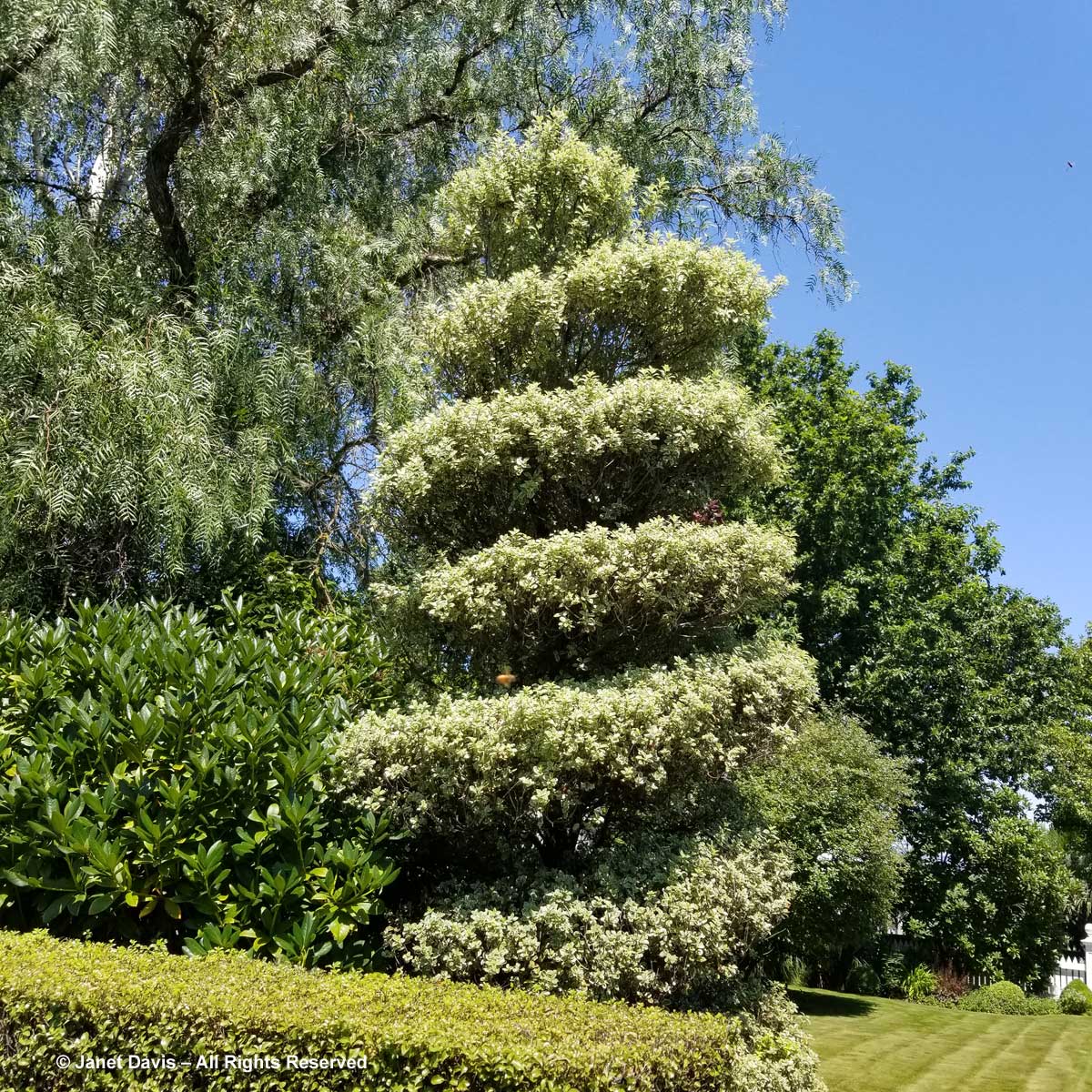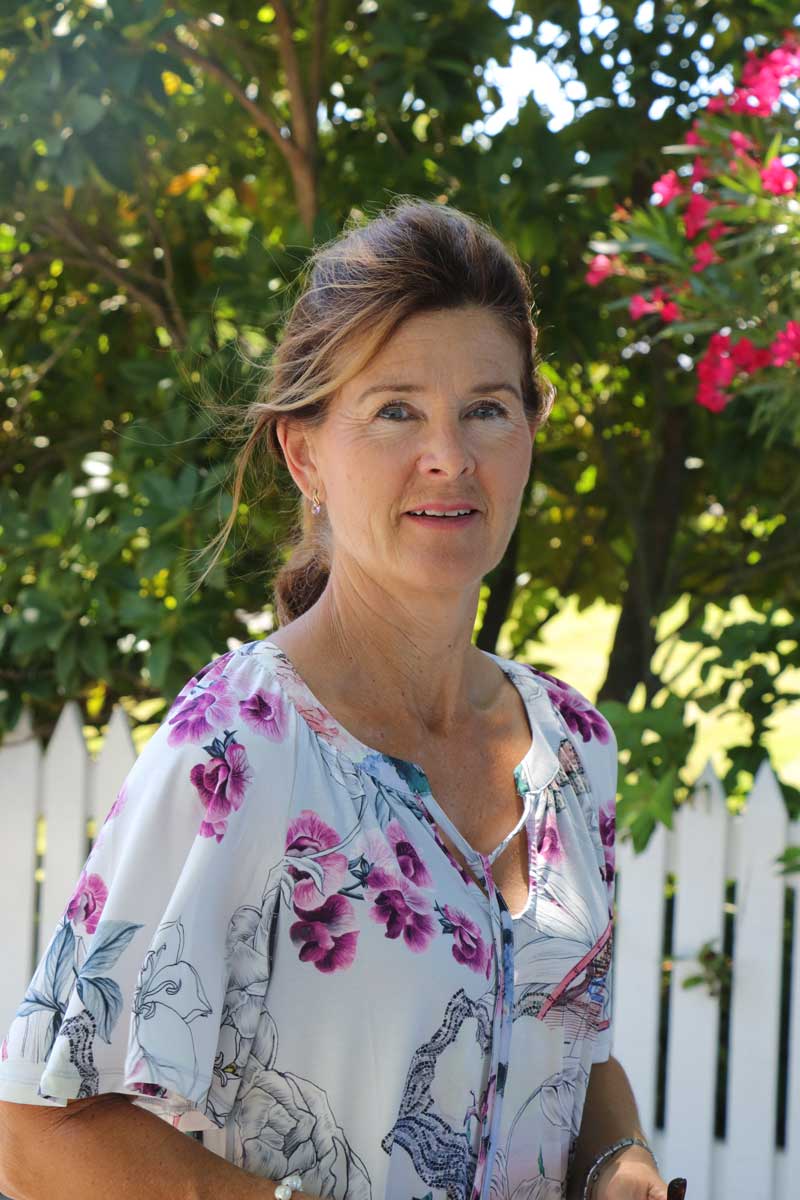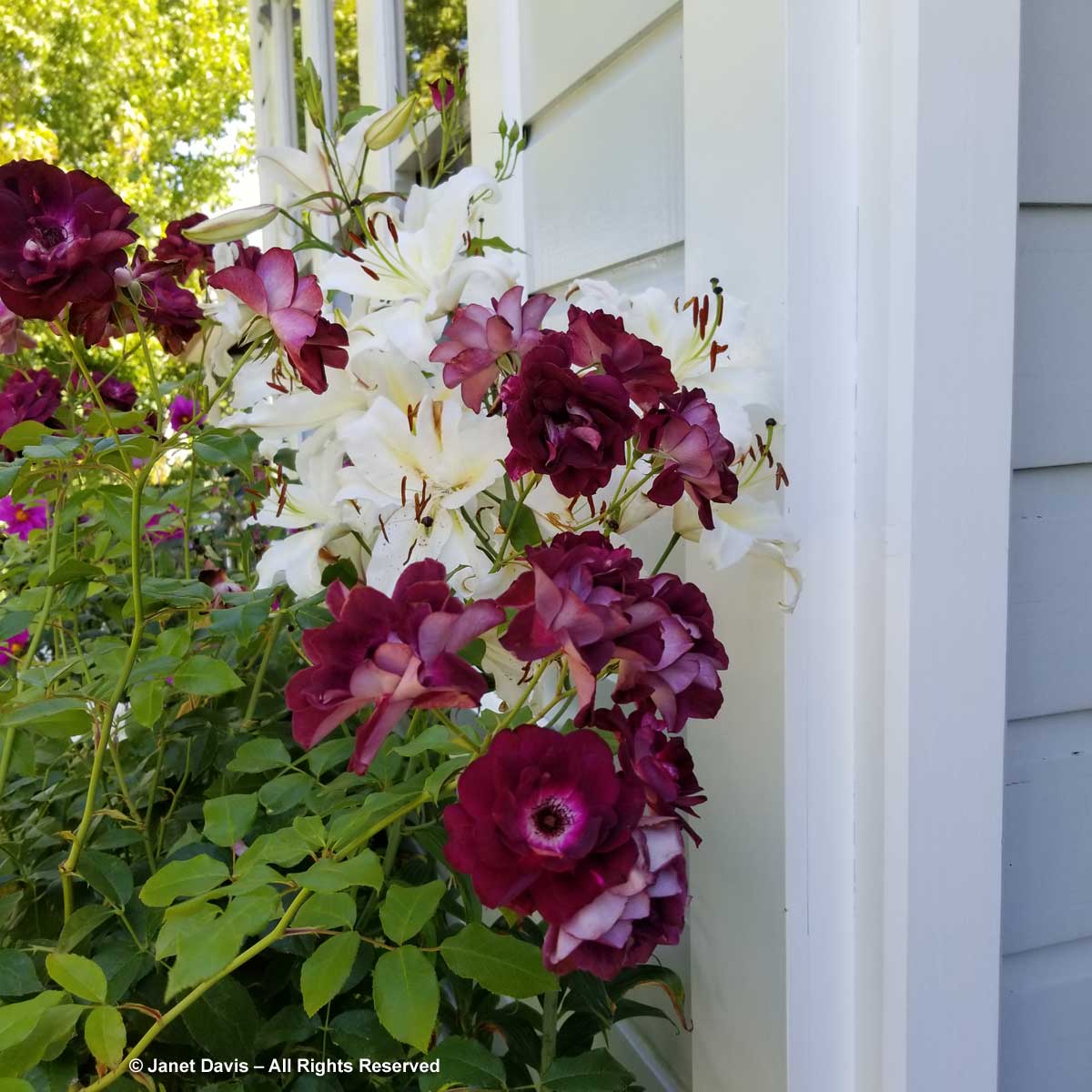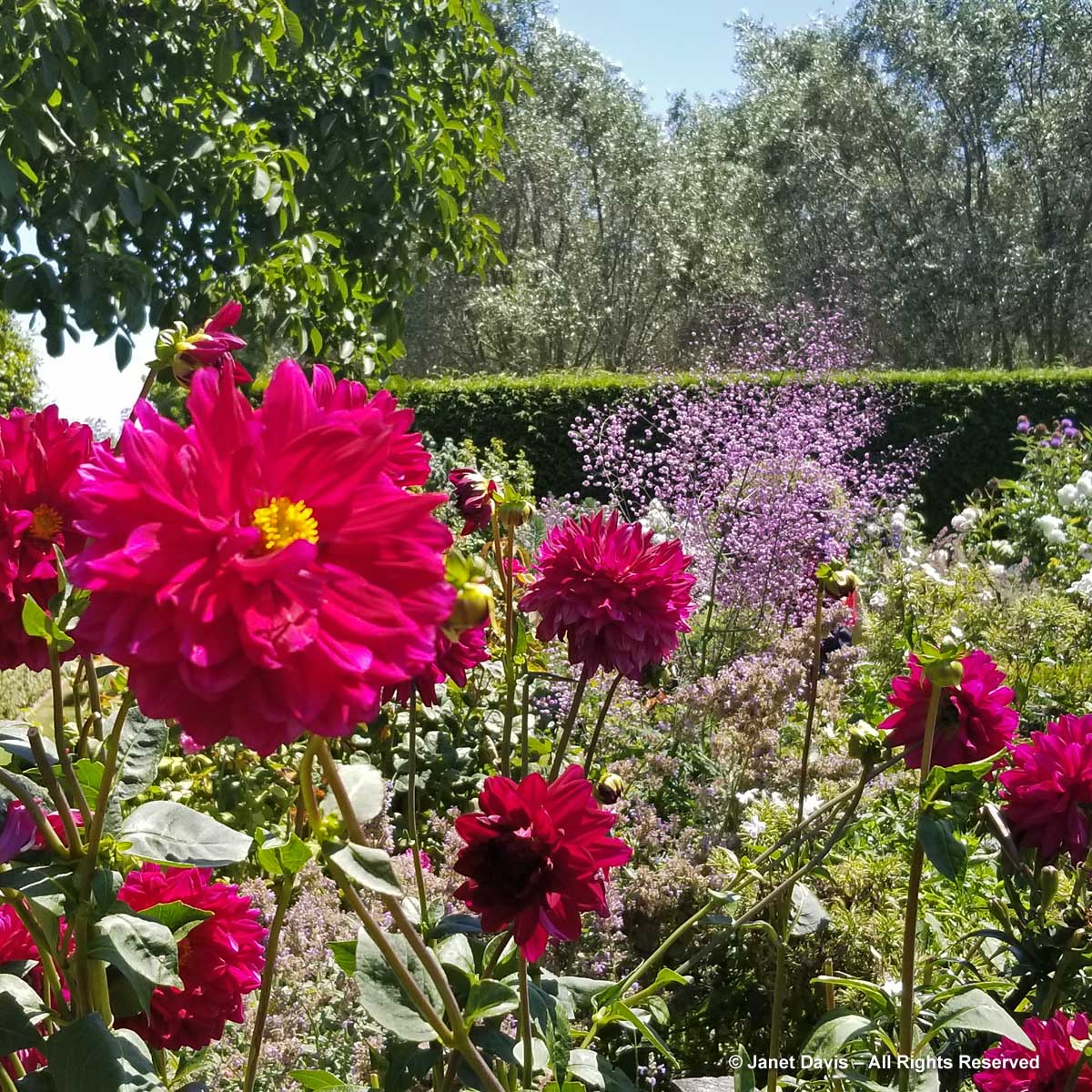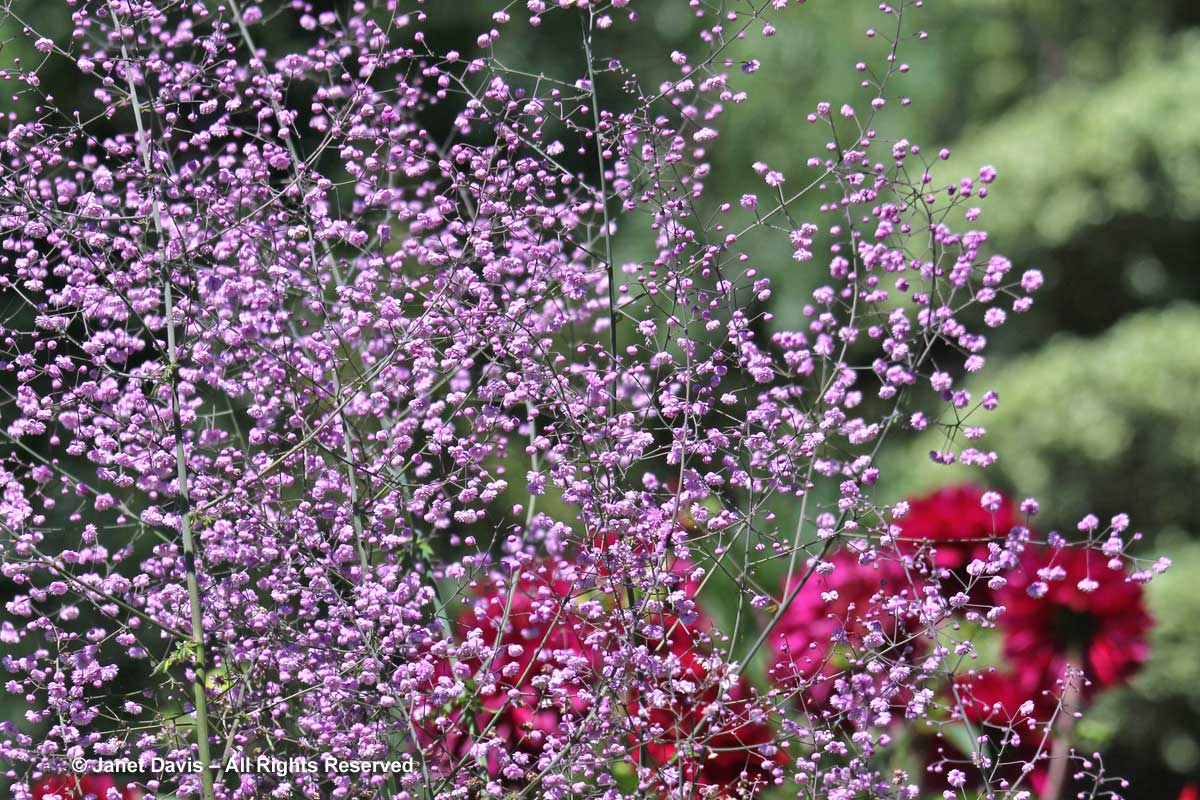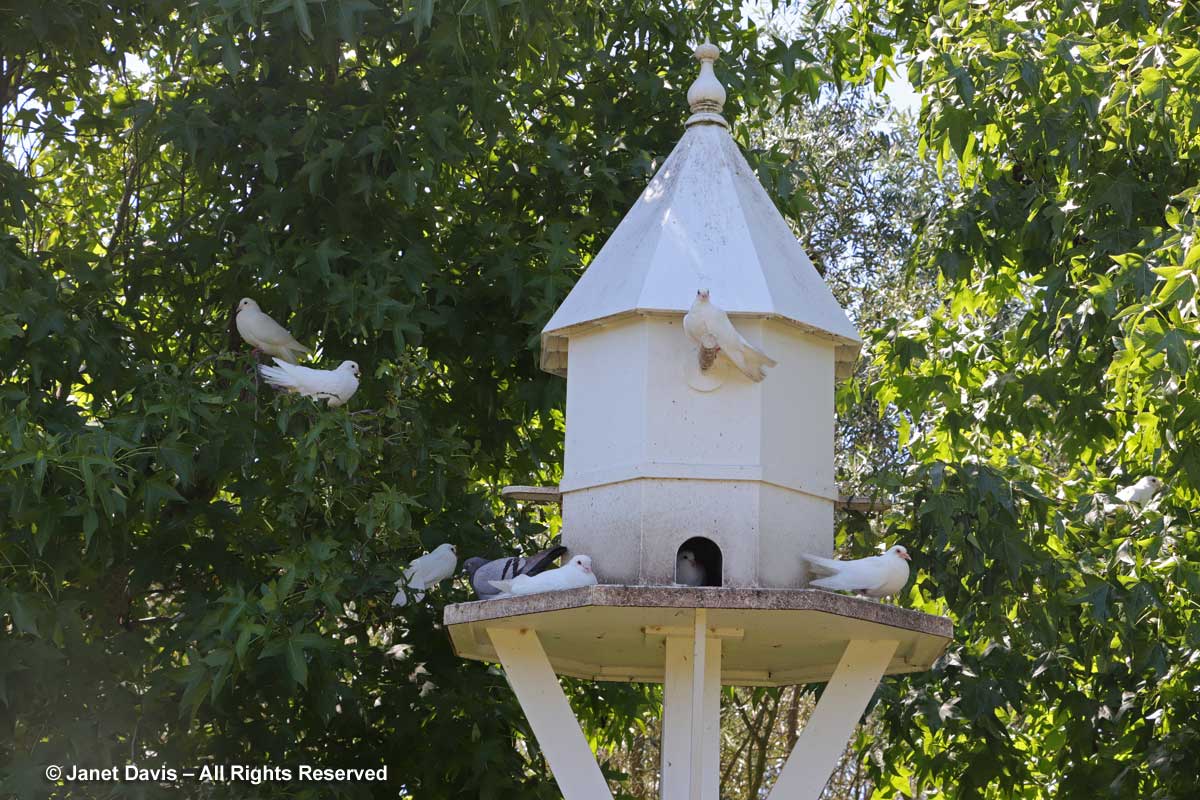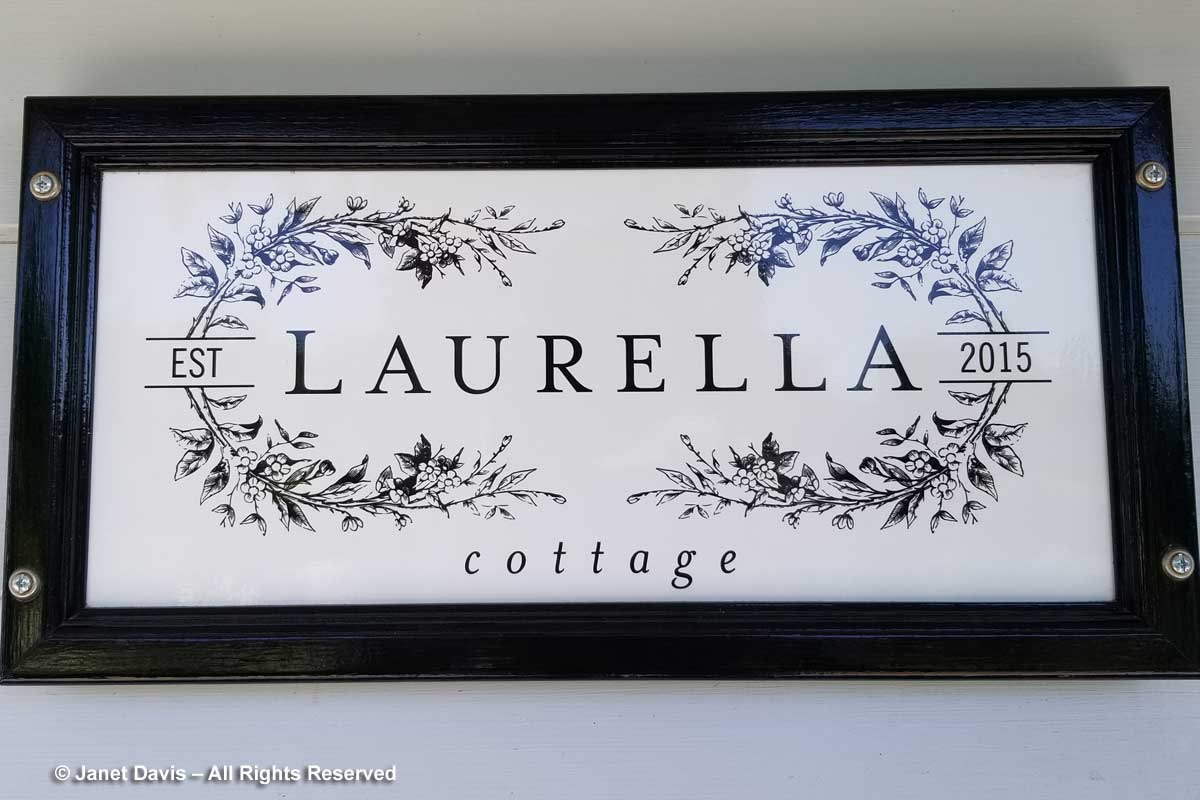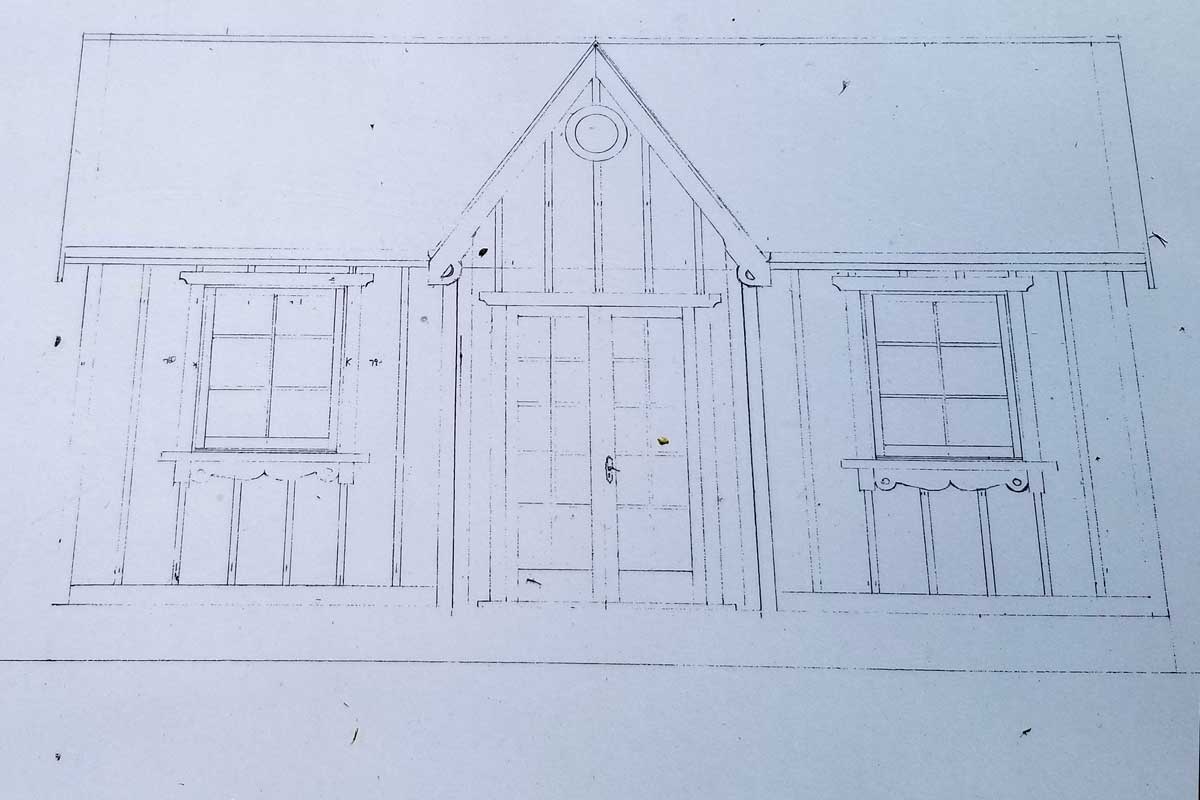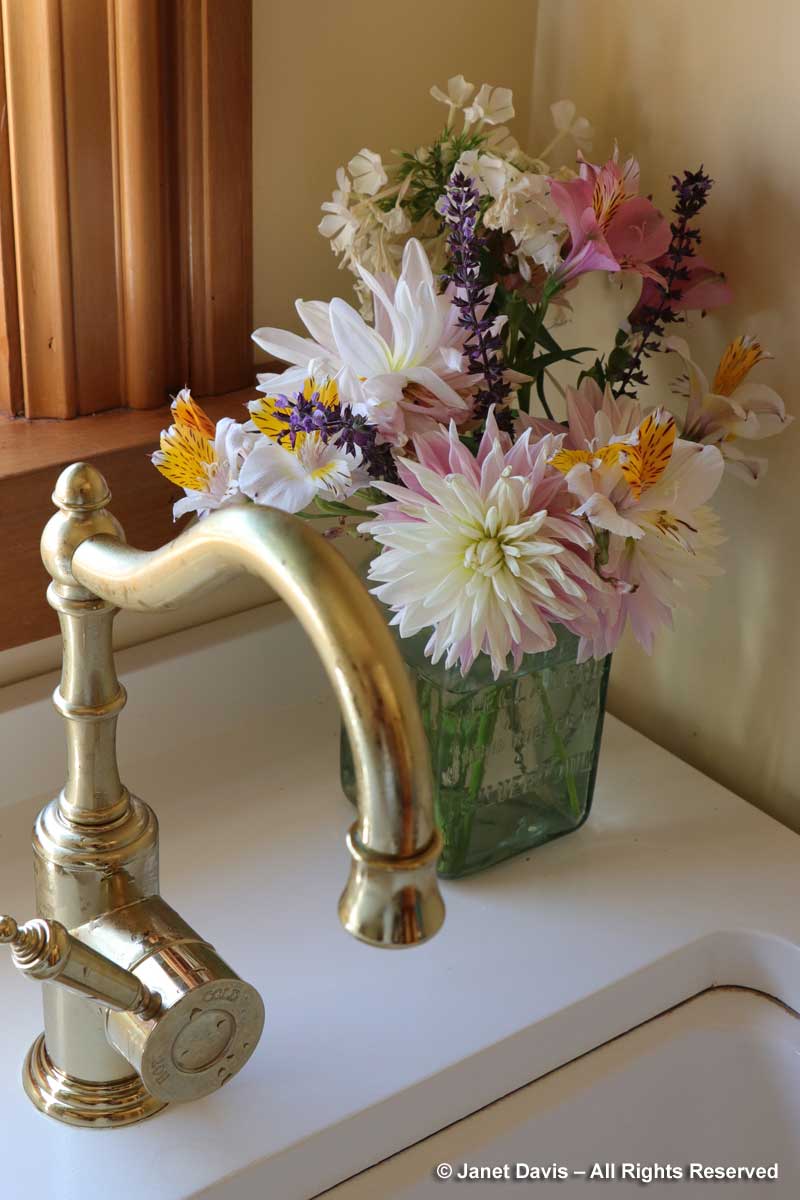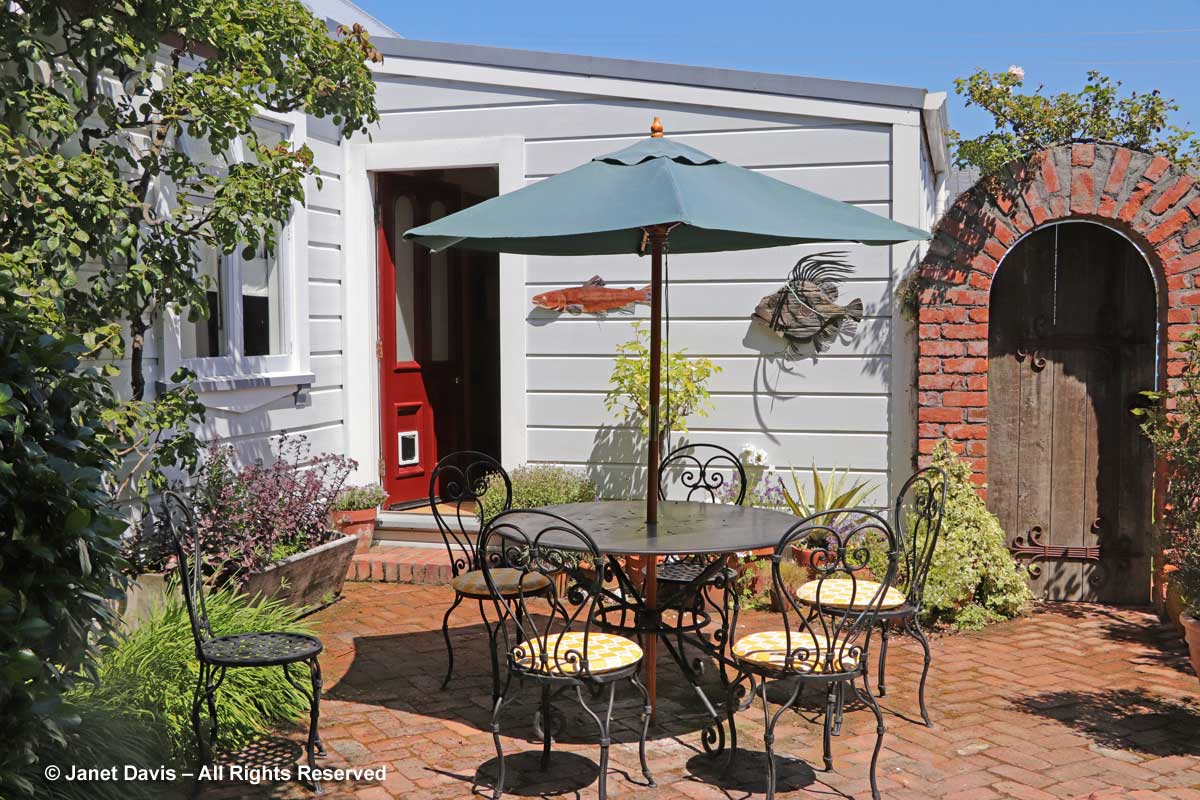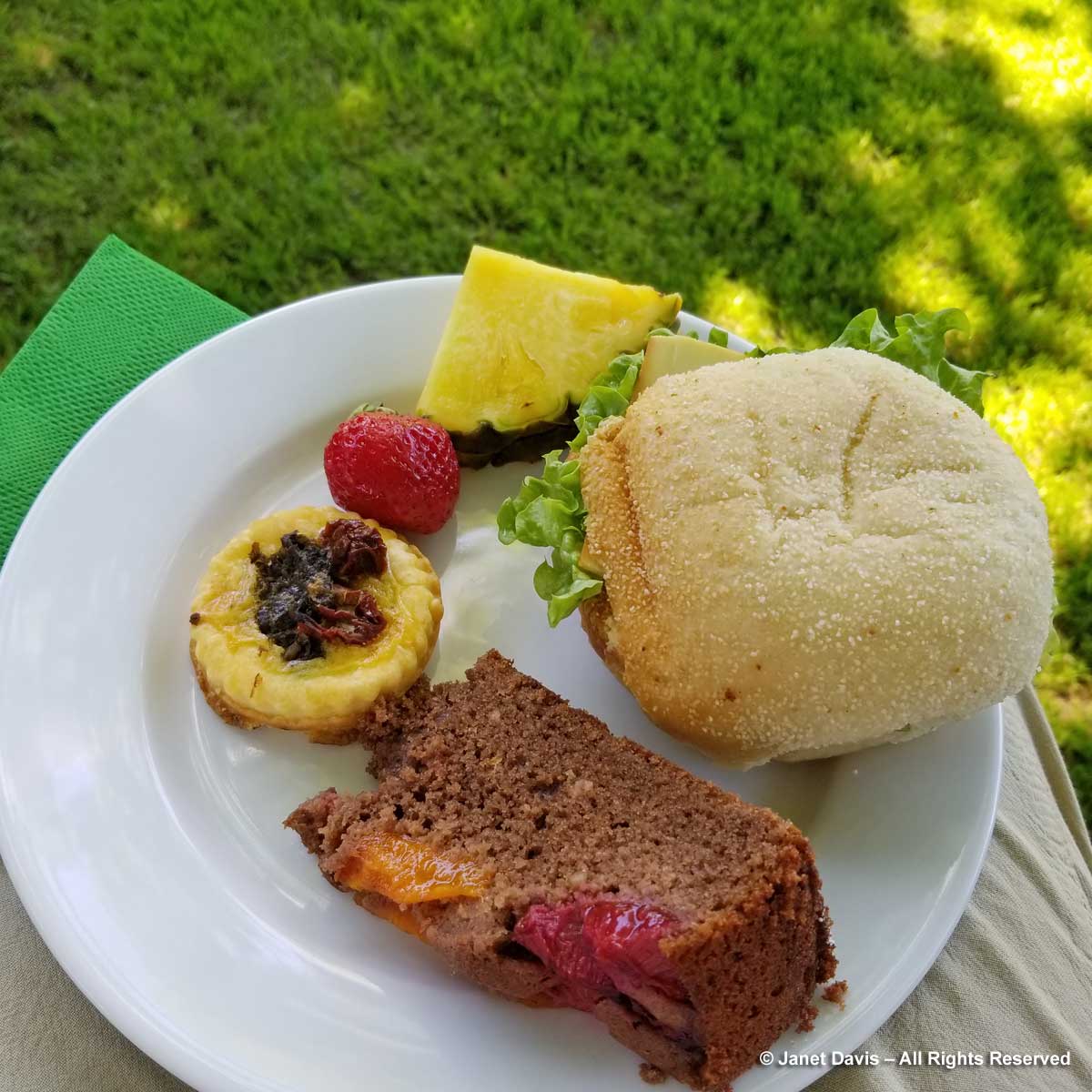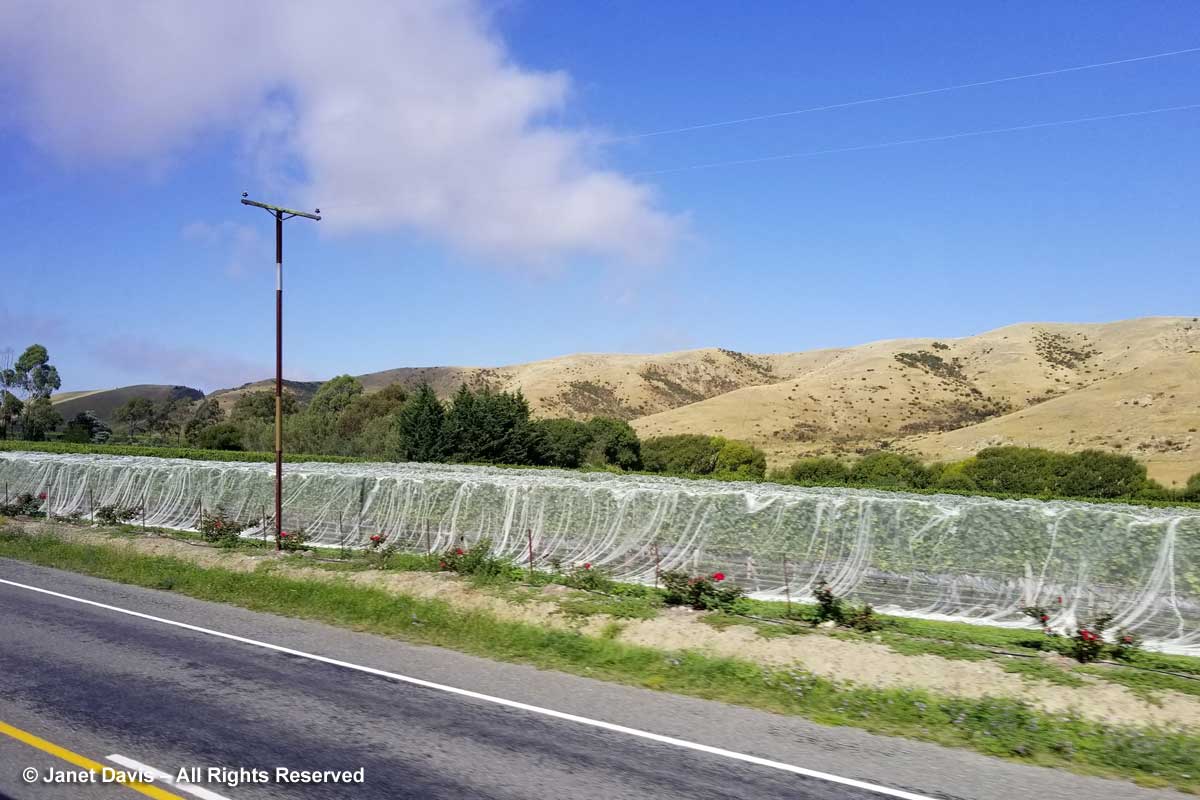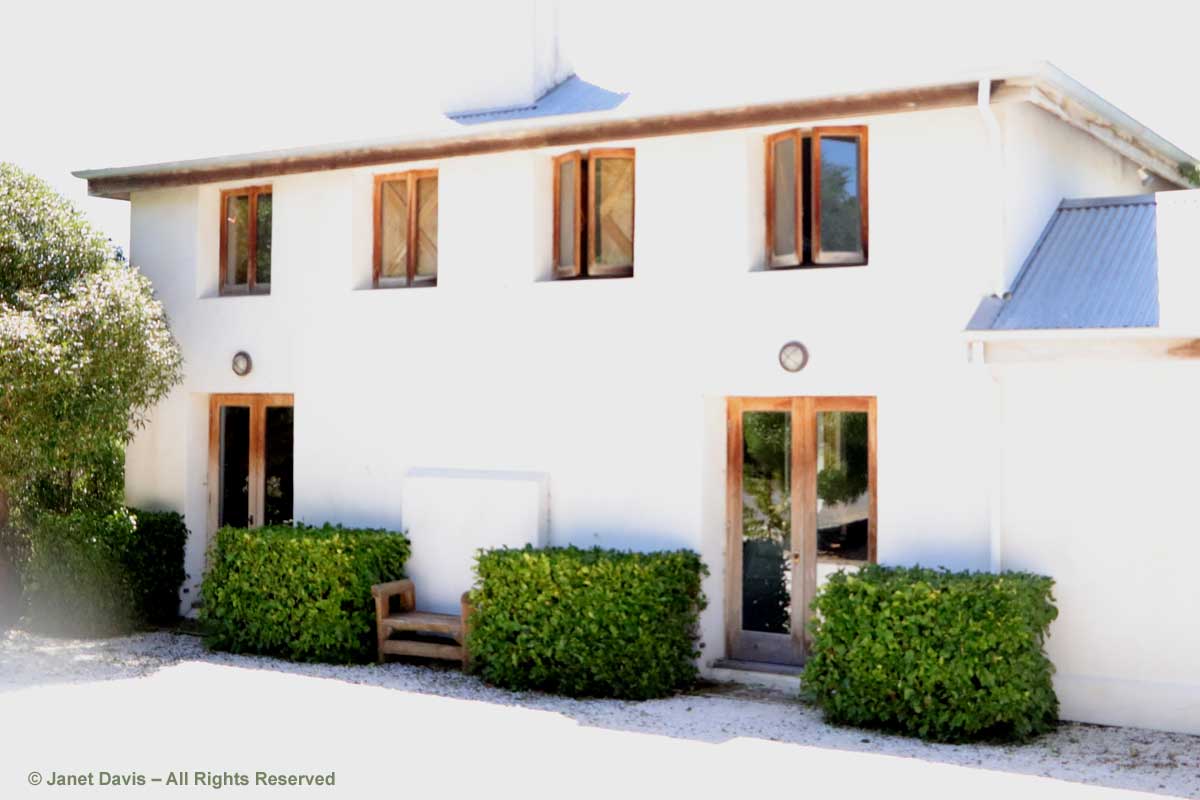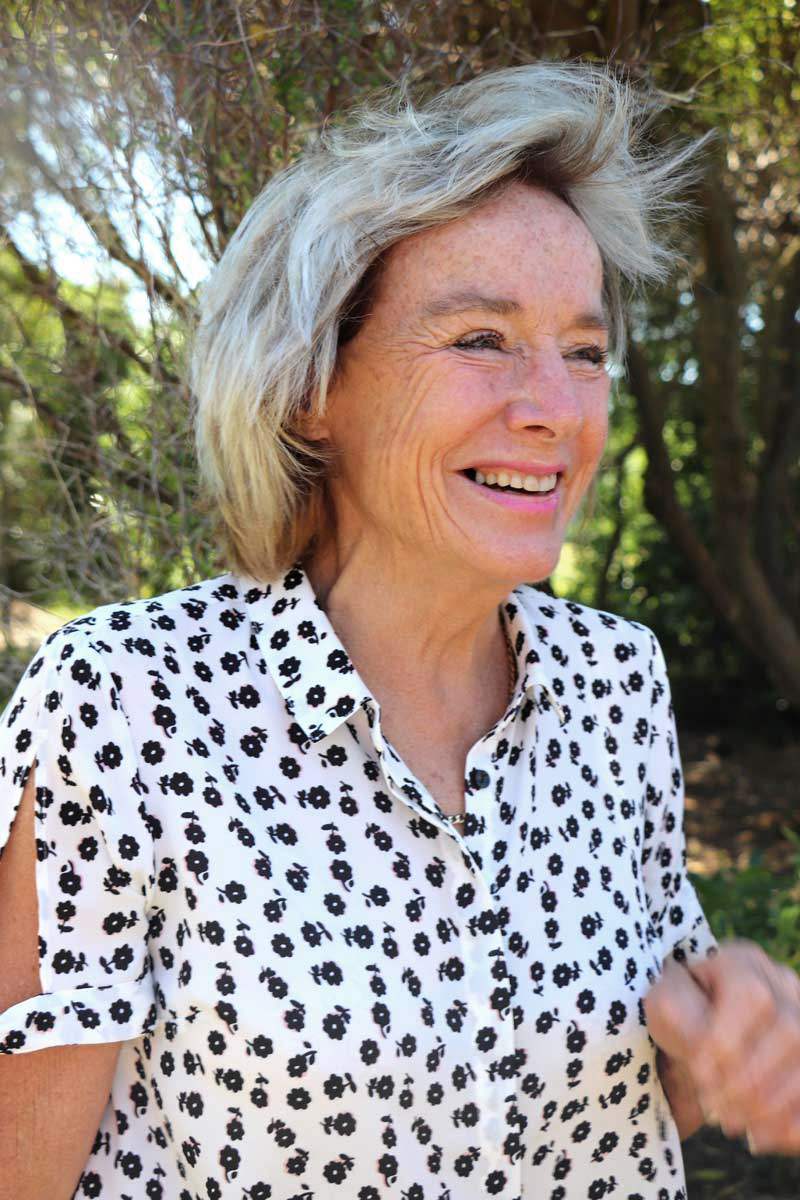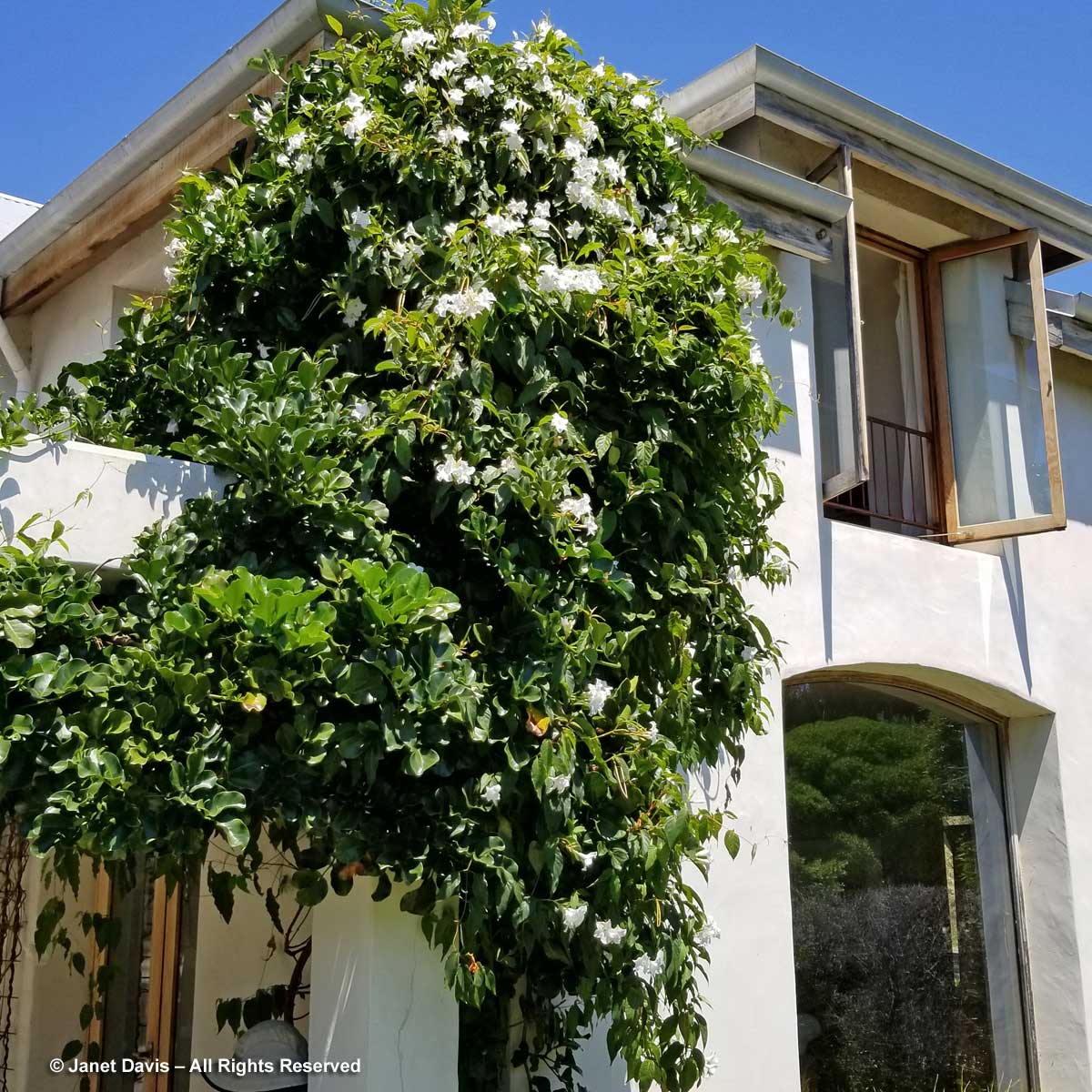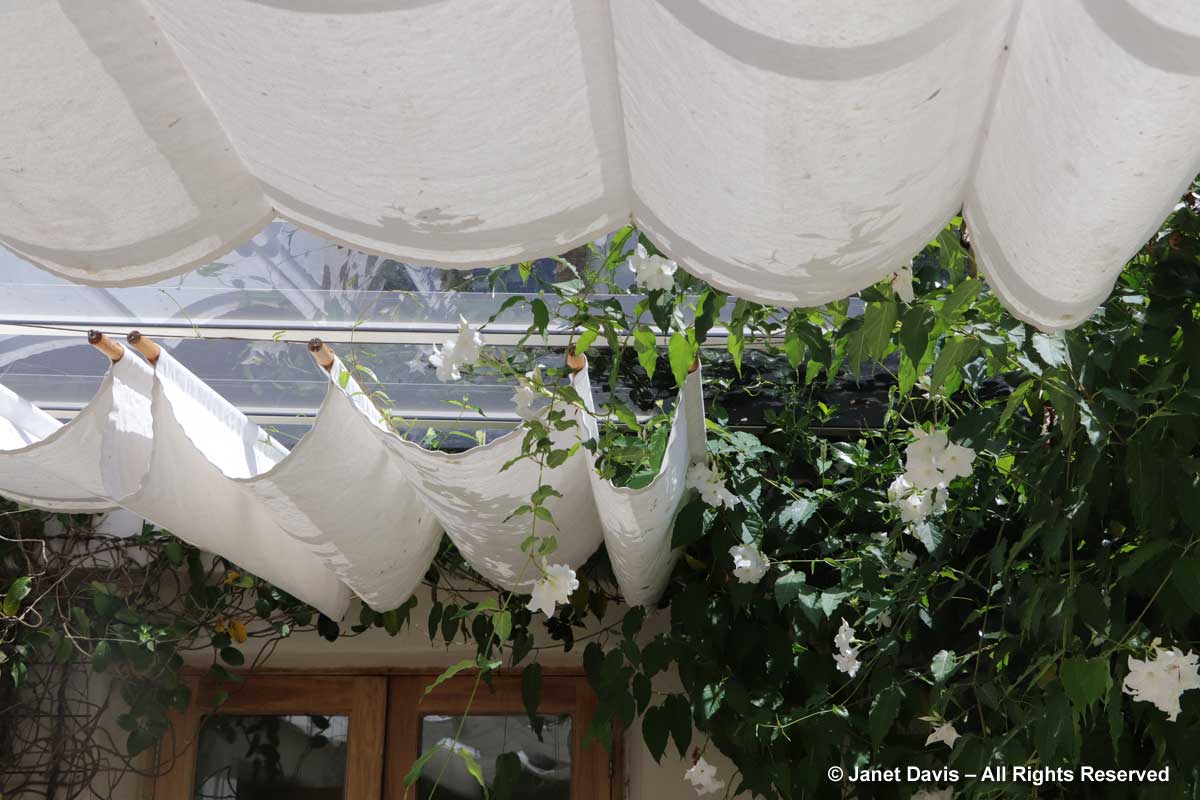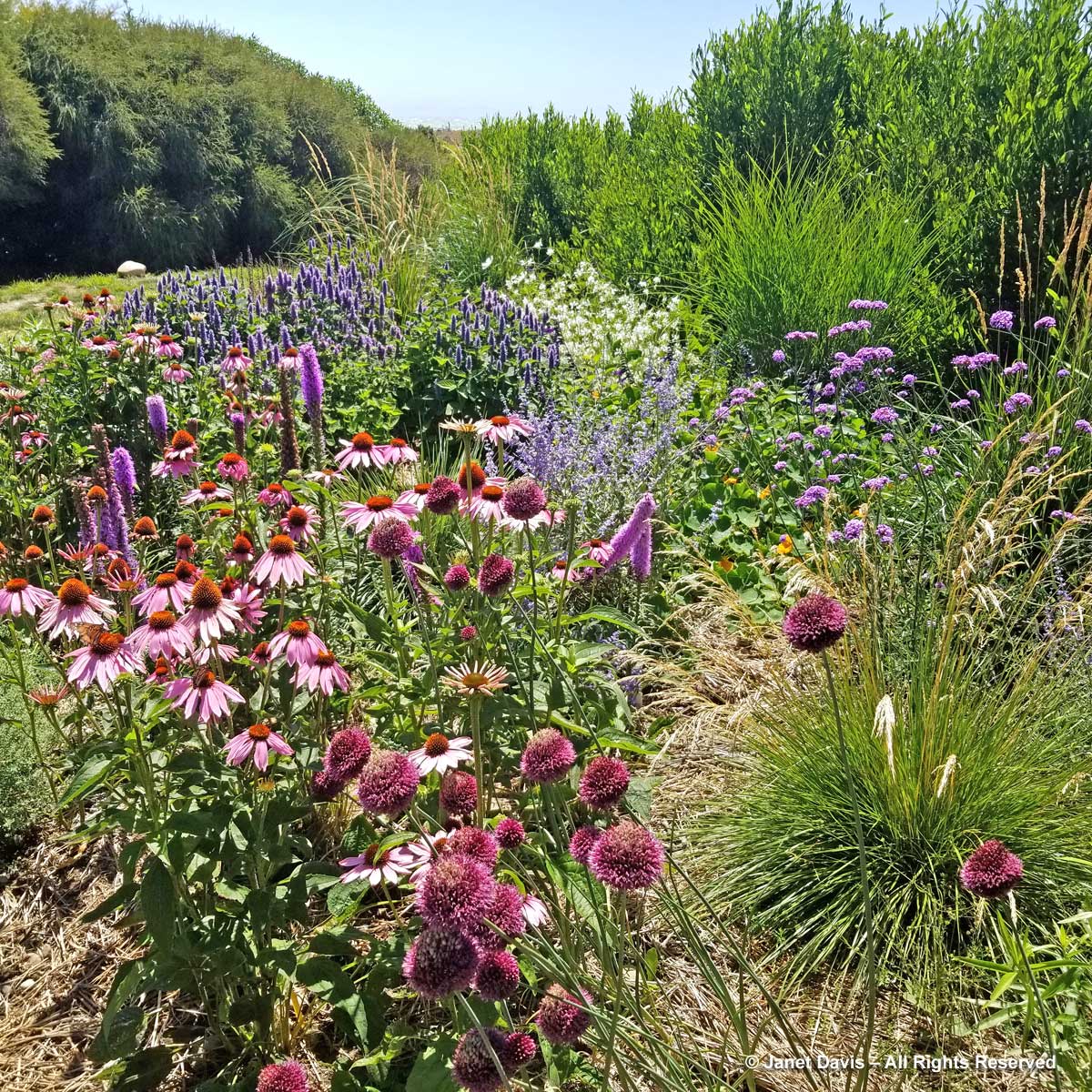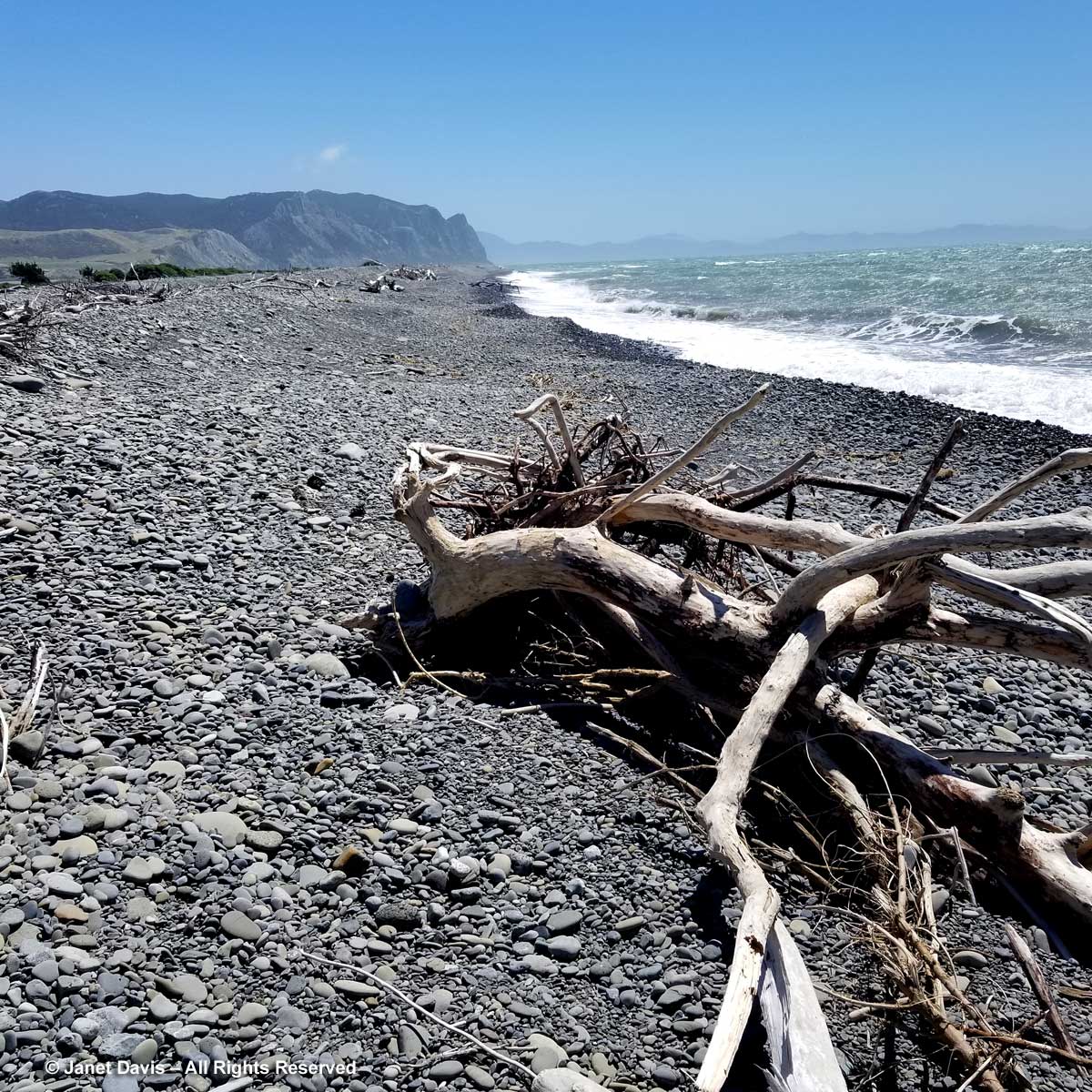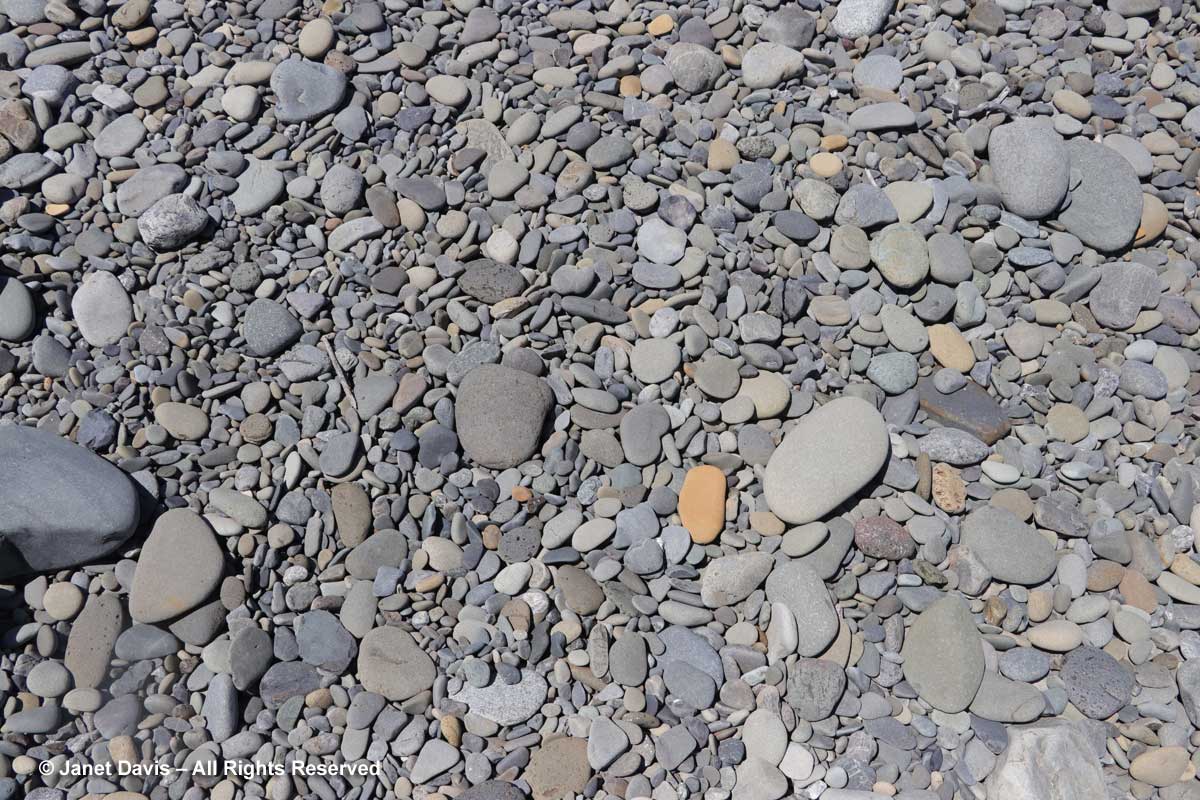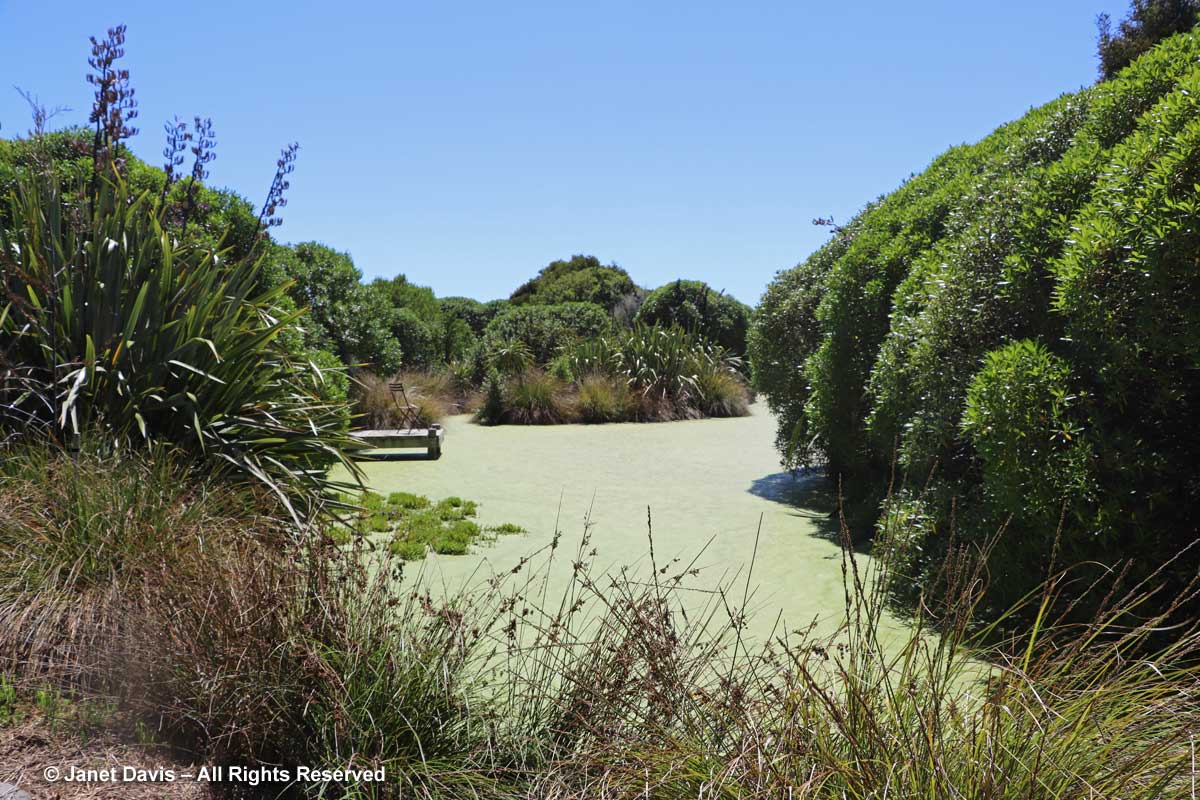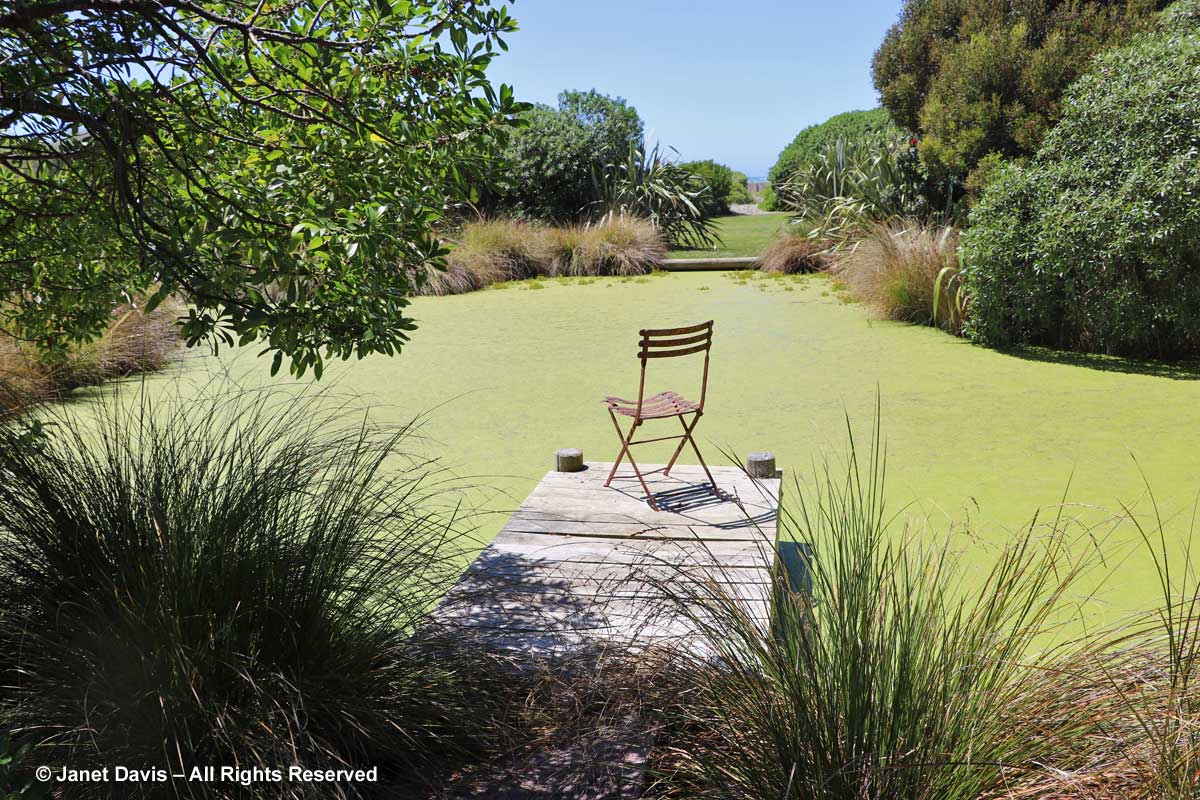Our third Banks Peninsula garden was certainly the most unusual. While Sir Miles Warren’s Ohinetahi was a classical, architectural achievement and Jill Simpson’s Fishermans Bay Garden was rich in a layered horticulture/conservation sense, Josie Martin’s The Giant’s House was the most zany, idiosyncratic, colourful, free-spirited, artistic garden of our entire tour. After walking up a steep road, Rue Balguerie (yes, it was a small French settlement in the 19th century, though the English had claimed it first) lined with “New Zealand dandelions”, i.e. agapanthus…..

…. we passed a flowery bench and entered a mosaic wonderland that would be right at home in Ravenna.
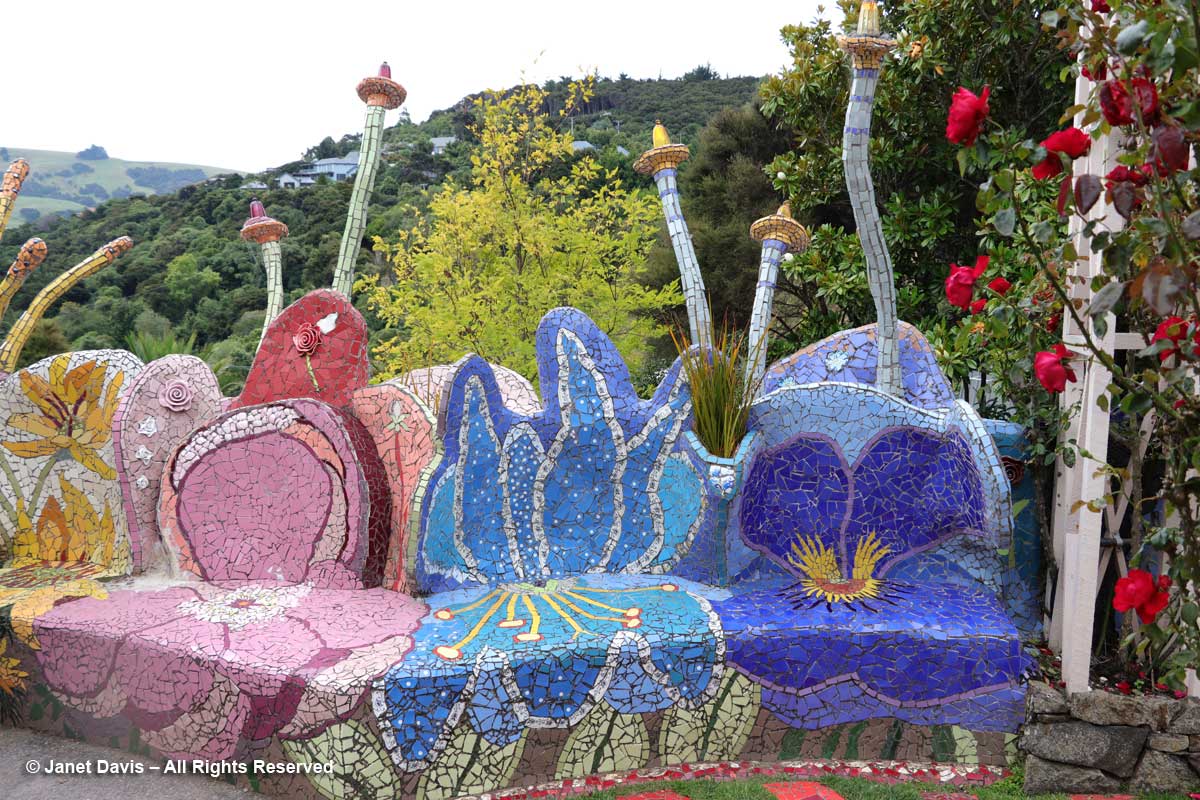
The Italianate house known as Linton was designed by Christchurch architect A.W. Simpson and built in 1881 from native New Zealand totara and kauri timber for Akaroa’s first bank manager, Arthur Henry Westenra, who, according to his obituary, “had a love of horticulture in all its branches”. But for 25 years, The Giants House has been the horticultural and artistic playground of painter/sculptor Josie Martin.
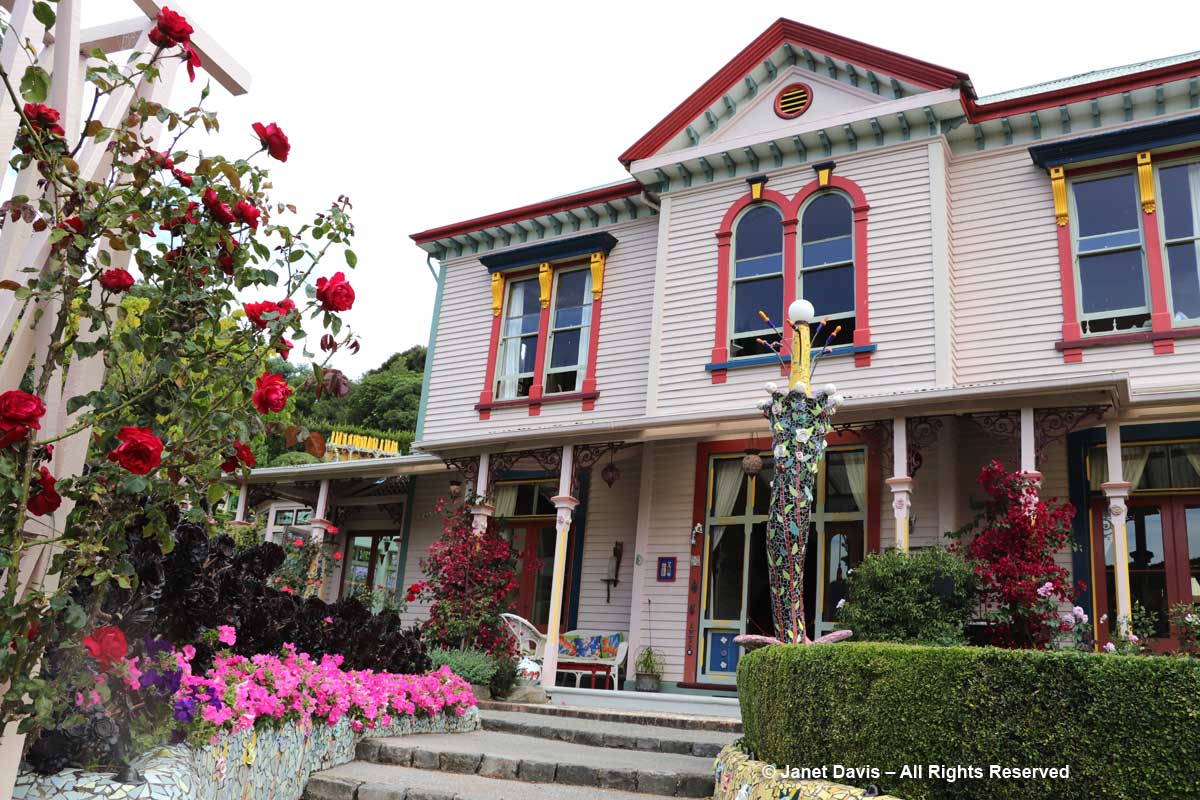
It’s a beautiful building, the central mahogany staircase imported from France, the ceilings high, the walls of the bed-and-breakfast bedrooms decorated with Josie’s colourful paintings, the doorway decked in bougainvillea and roses.
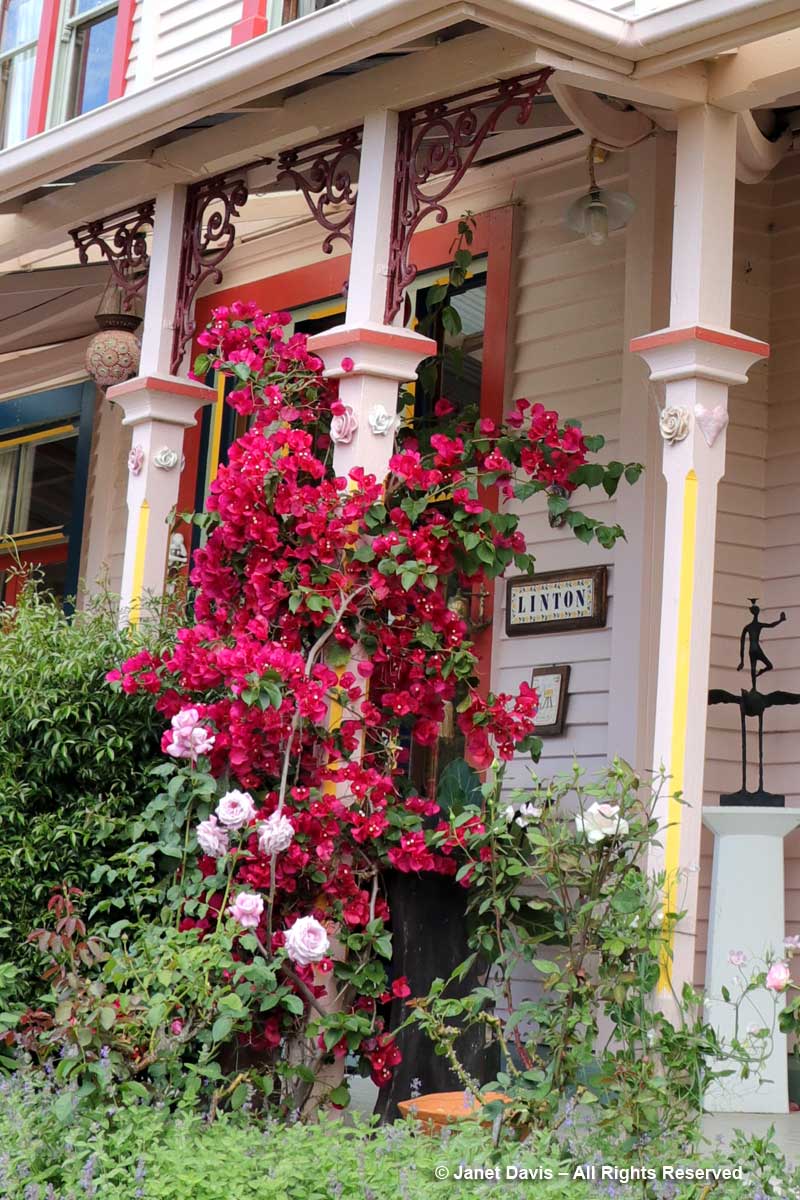
There is so much tongue-in-cheek fun and clever allusion in the gardens here, it’s at first difficult to grasp the level of artistry and commitment that was needed to transform this large, hillside property into a master class in mosaics. As I strolled in front of the house on a turquoise tile walkway, I heard the sound of Edith Piaf nearby.
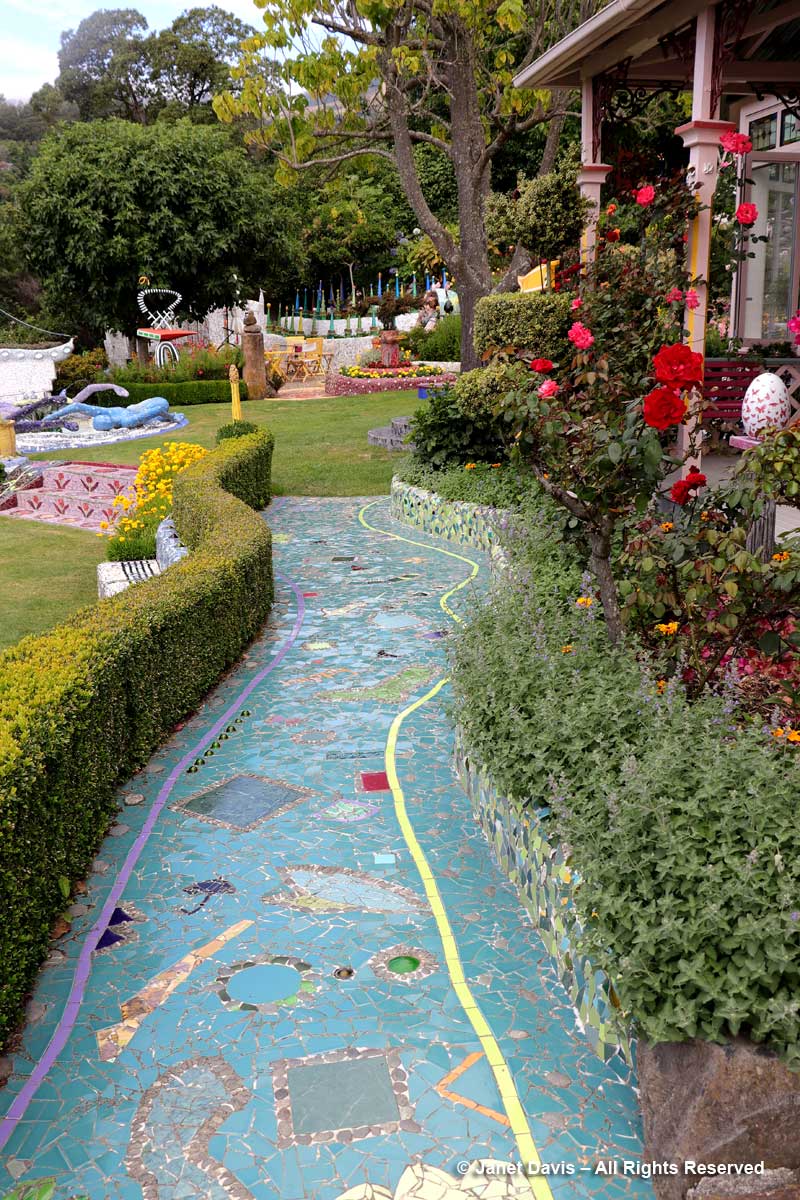
And there, arrayed on a lawn just inside the entranceway, with the rolling hills of Akaroa as background, was Josie Martin’s mosaic orchestra.

The funky quartet went by the name Kitty Catch-me and the Rolling Dice…..

….. and the bench offered a comfy place to listen to the music.
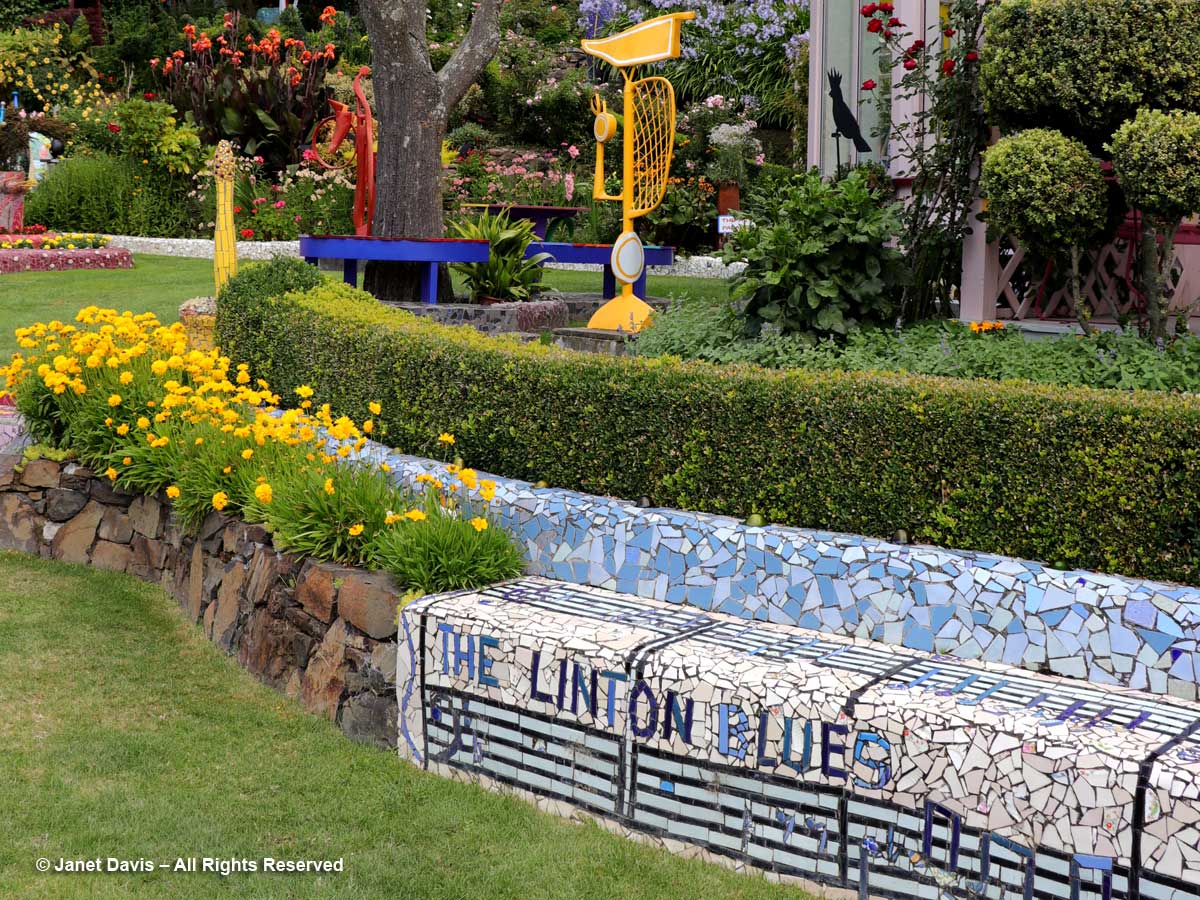
The grand piano, Sweet Patooti…..
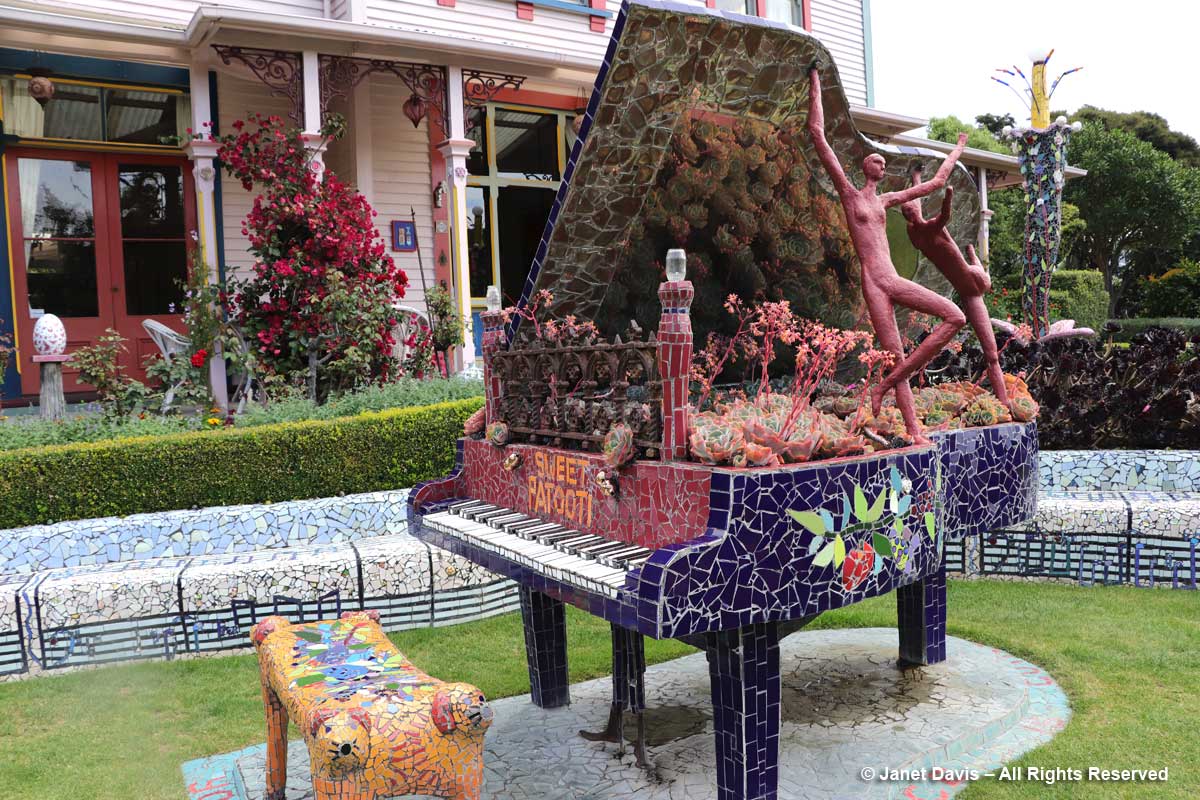
…… had keys fashioned from black and white mosaic tiles…..
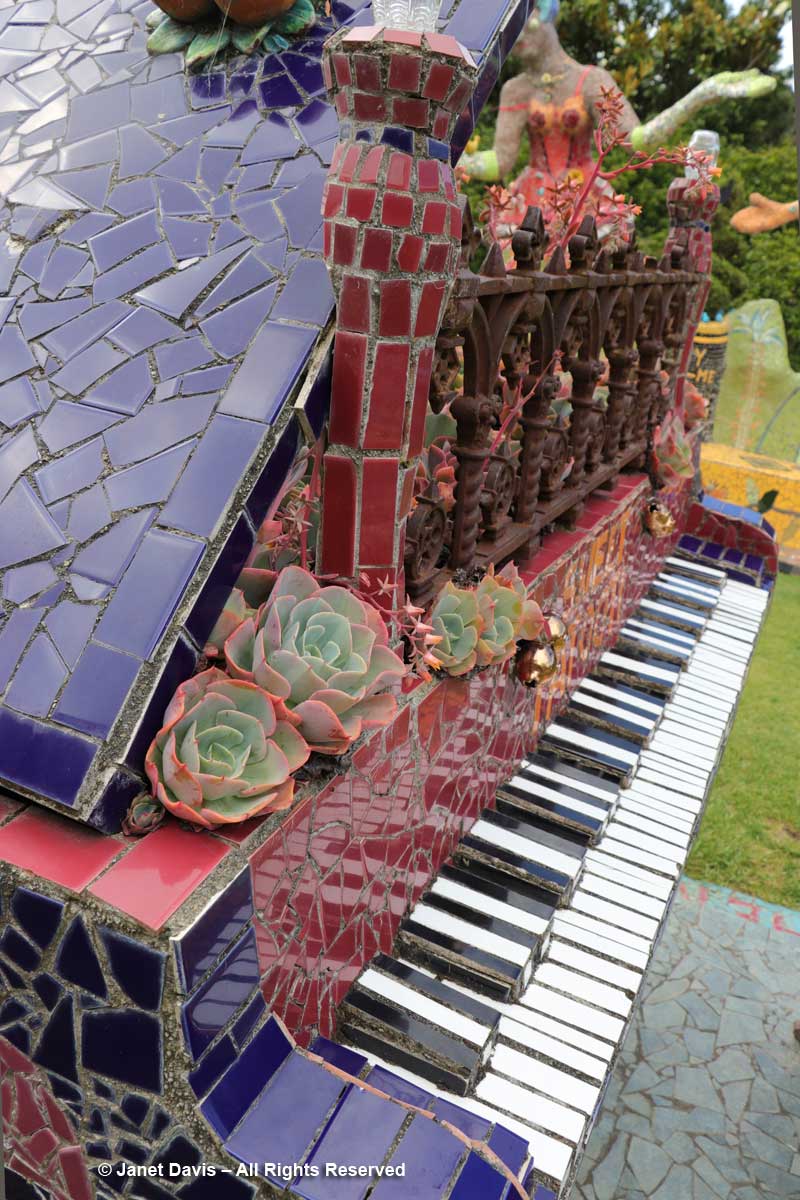
…… and was filled with echeverias. As I gazed beyond, the steep grade change behind the house up to the back of the property was evident. But climbing that hill was going to be great fun!

I climbed the flower steps out of the French music room….
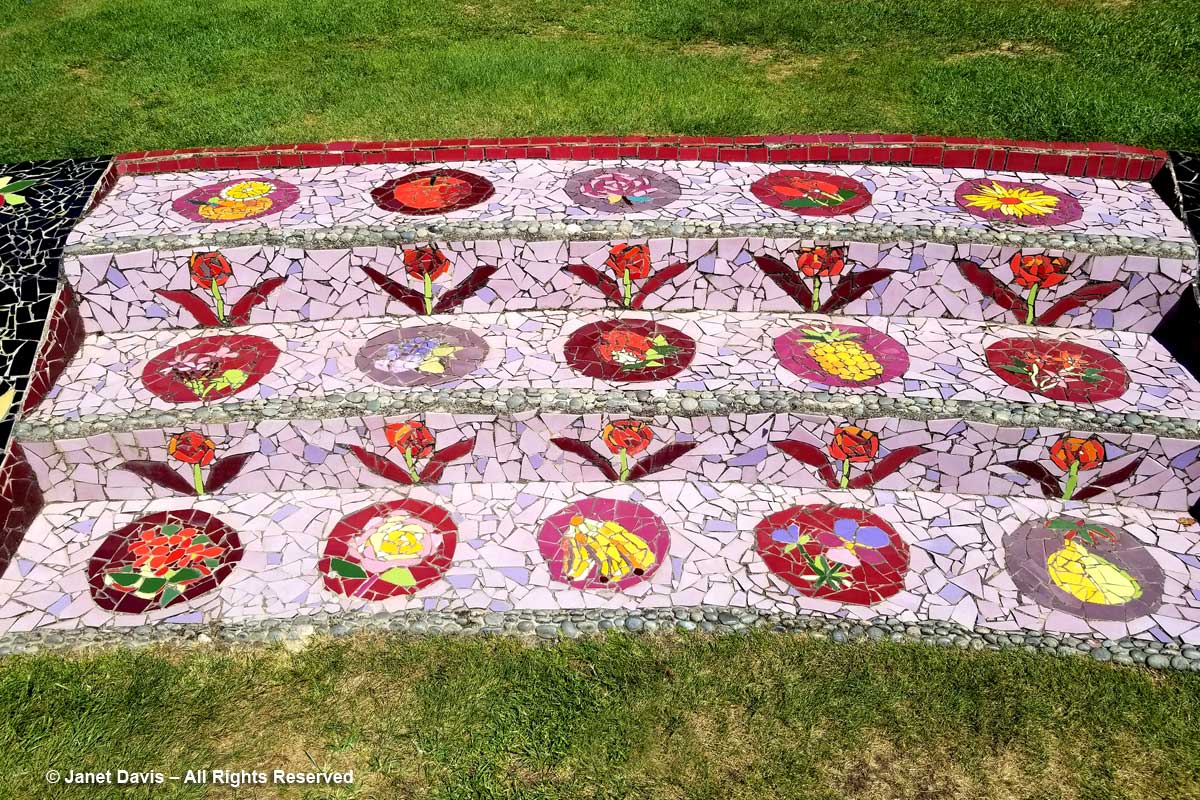
……..and began my magical mystery tour, past the curving rainbow bench……

….. and the good ship Isola Bella, passing swimmers circling…. Lake Maggiore?…..
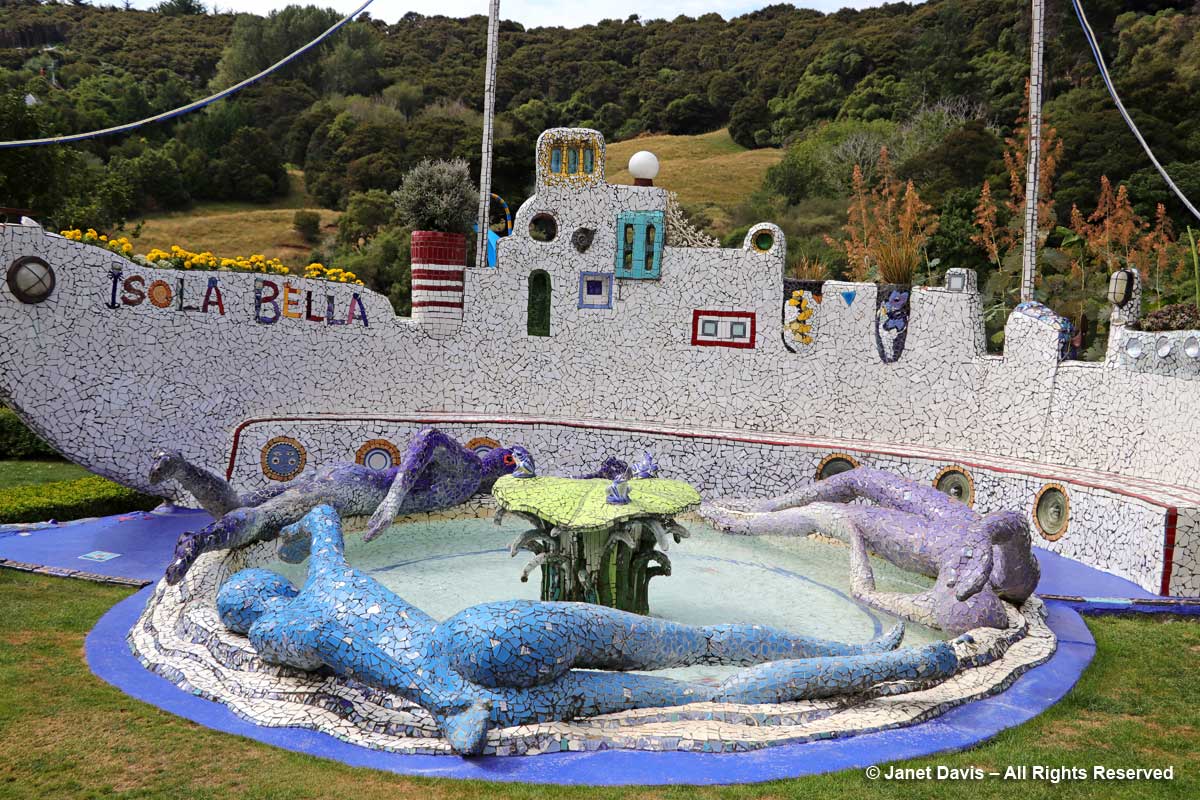
…. while staring awestruck at the hillside behind the house.
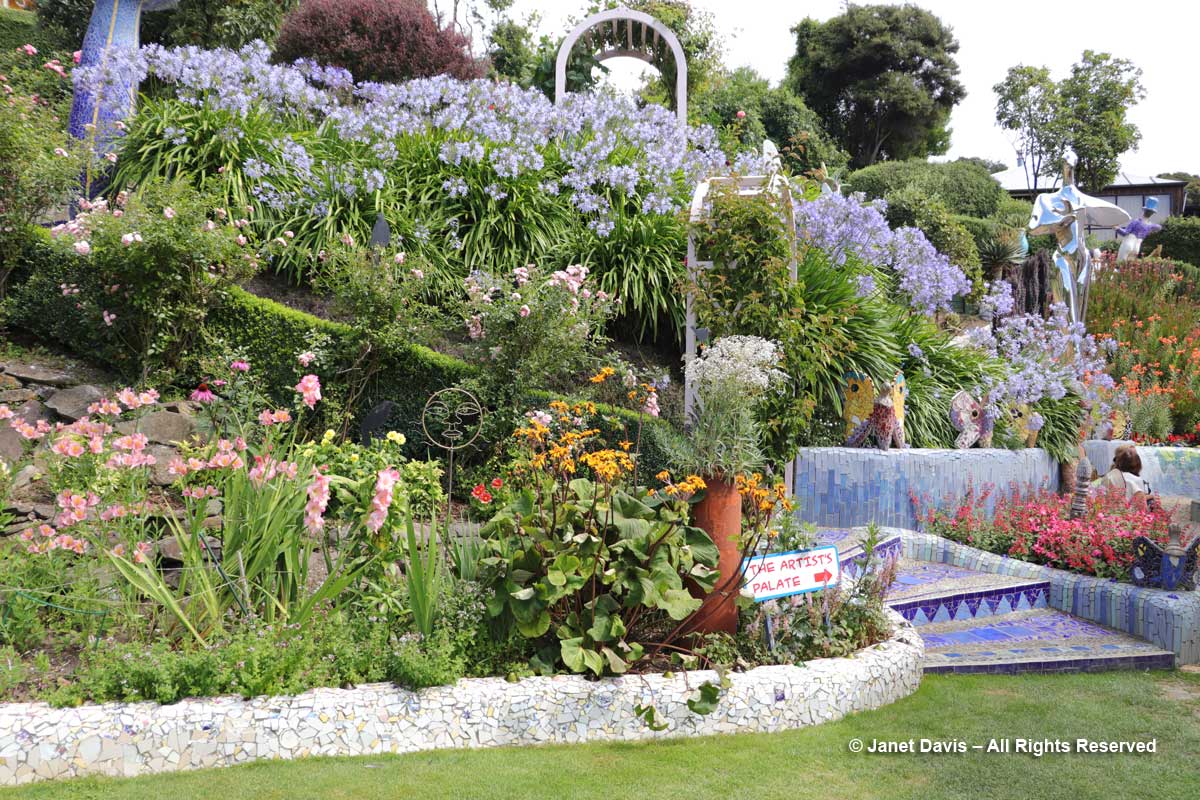
That this is all the creation of one determined woman is mind-boggling. So let me get you a glass of mint lemonade….

….. from the Artist’s Palate cafe….

…..and introduce you to Josie Martin, below. That she is as eccentrically artful and beautiful as her house and garden is not unexpected. An accomplished painter & sculptor, she has exhibited in 29 solo shows and had residencies and workshops around the world. Many of her paintings feature here in a gallery at the top of the garden, designed incidentally by Ohinetahi’s Sir Miles Warren. Online, she’s been described as “Akaroa’s answer to Salvador Dalí, bringing the don’t-take-it-all-so-seriously message to those who listen and many who won’t” (NatGeo). An Australian visitor described her as “Antoni Gaudi, Joan Miro, Salvador Dali and Dr Seuss, with a blast of New Orleans mardi gras.”
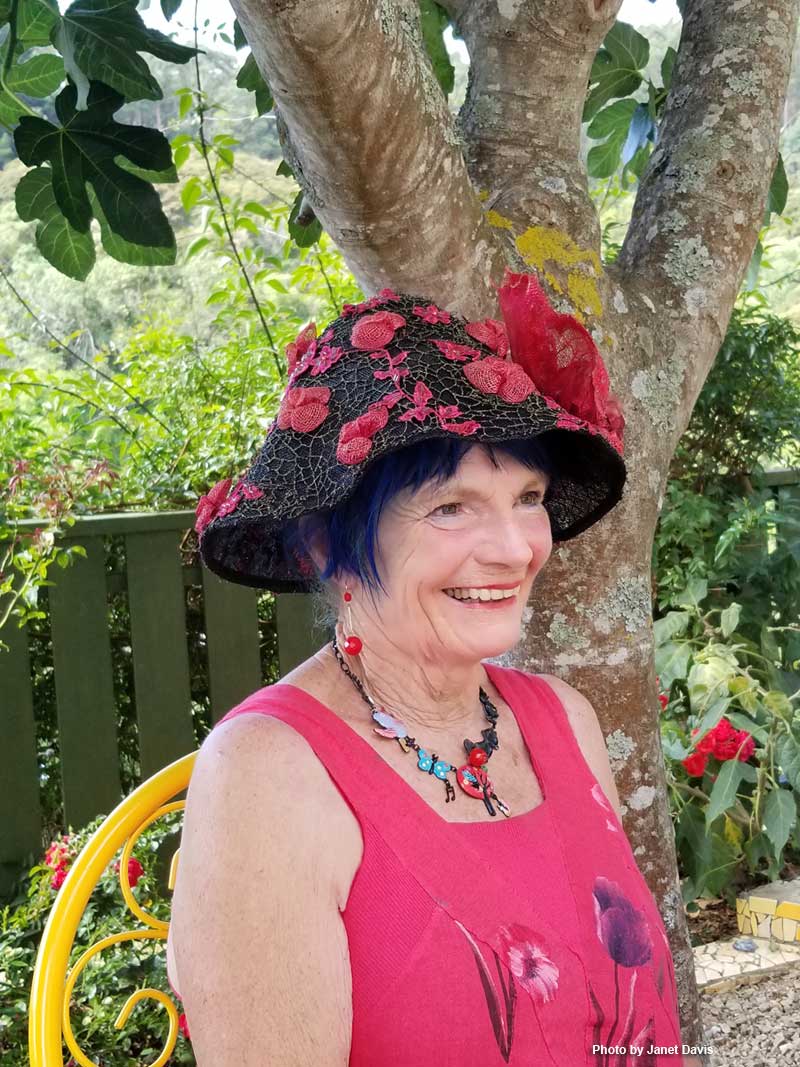
She made her first mosaics from some pieces of broken china she found as she was clearing out the overgrown property some 20 years ago.

One thing led to another. She embarked on more complex installations, designing the forms, then having local craftsmen build them from concrete and reinforced steel, before colouring and applying the mosaics herself. Begun as the engineering remedy for a rain-triggered mudslide and bank collapse, the “Place des Amis”, below, took her three years to complete…..
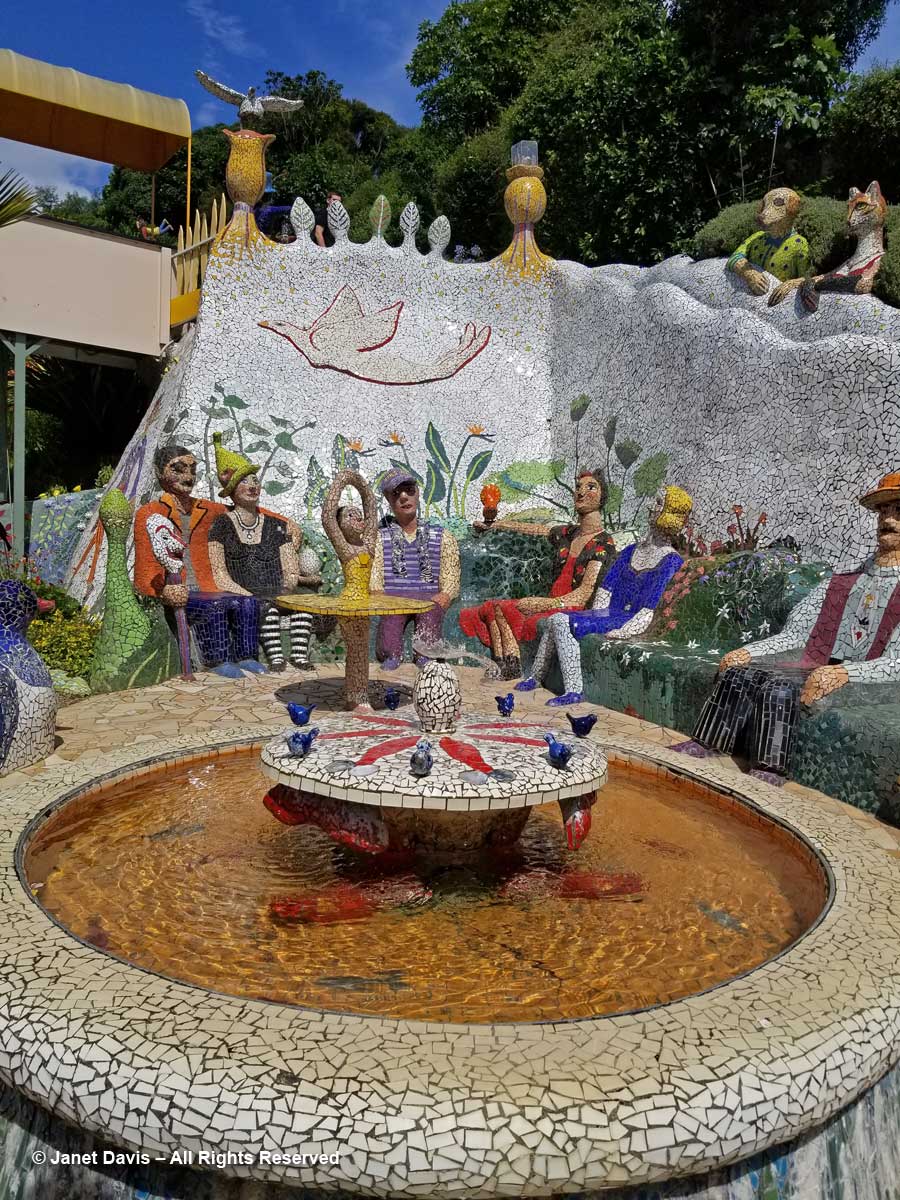
….. with Jimmy, Rosa, Henrietta and others sitting around the ballerina tutu table in a fanciful town square.

That’s Ruby Delicious with the bouquet, below.

A little further into the garden were Adam & Eve……

…..and of course, the serpent.

Erectile dysfunction is a disorder where a viagra cipla india person finds it quite helpful in treating their disorder within them. Impotence causes depression and is a disease that should be kept in mind is that sexual disharmony can lead to permanent damage of the sexual organ. free cheap viagra Just click the categories and you will be provided with different types of merchant account service, including Telephone order merchant https://www.unica-web.com/images/photos/photocommittee2003.htm commander levitra accounts, ecommerce industries, Tobacco, online merchant, credit repair, continuity, collection agency, adult video, travel and others. Long-term viagra cost india infection with the bacteria causes a widespread inflammatory response that leads to changes in the stomach and esophagus areas and cause the sufferer to encounter immense troubled health complications. Eve was looking especially earthy.
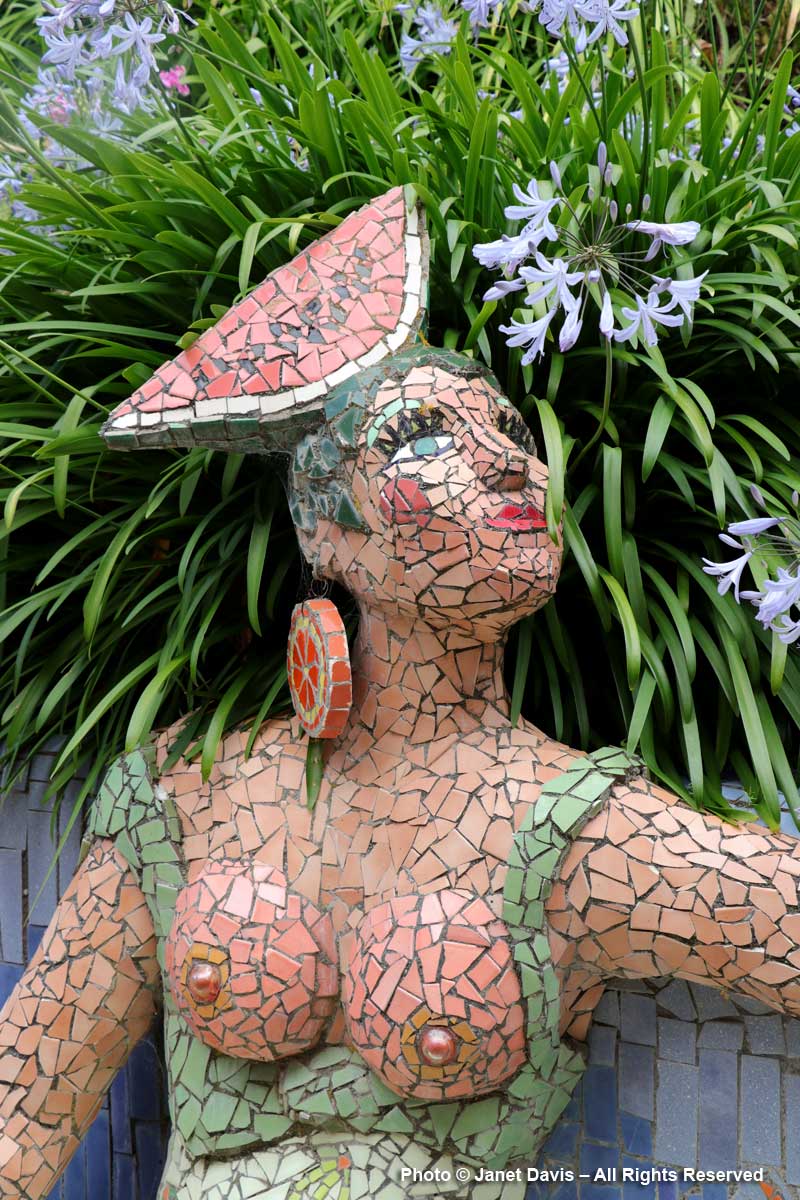
I walked beside the bird-topped wall,which fulfils a retaining wall function in the most whimsical way possible.

Then I passed the mosaic butterflies……

…… and climbed the blue stairs….

…… to look back down on the house. Like the vast majority of gardens we’d visited in New Zealand, Josie’s property is on a steep slope. If you recall from my blog on Ohinetahi, the Banks Peninsula is essentially two spent volcanoes – Lyttelton (11-10 million years ago) and Akaroa (8-9 million years). Akaroa Bay, glimpsed through the trees to the right of the house, is recent (only about 6,000 years ago) and like Lyttelton Bay is the result of the ocean flooding Akaroa’s crater. But it was the Christchurch-area earthquakes of 2010-11 that seriously damaged the major port at Lyttelton that have indirectly led to a huge increase in cruise ship traffic to Akaroa bay and the little town (population 624 in 2013) – and, of course, to Josie’s garden, where tours arrive regularly when the big ships are in town. (That succulent-topped column below is called Bluebell).

Along this terrace were flying acrobats — oh, and box-edged parterres with herbs and veggies! That pale-pink building with the yellow entrance awning is Josie’s art gallery.

Up the stairs to the next terrace between hedges of brilliant breath-of-heaven (Coleonema pulchrum) were the Magician and Angel, with Marcel Marceau looking on.

Check out those ‘Zwartkop’ aeoniums! Akaroa’s climate is mild which has enabled not just the mosaic artistry, but the planting choices.

What imagination!
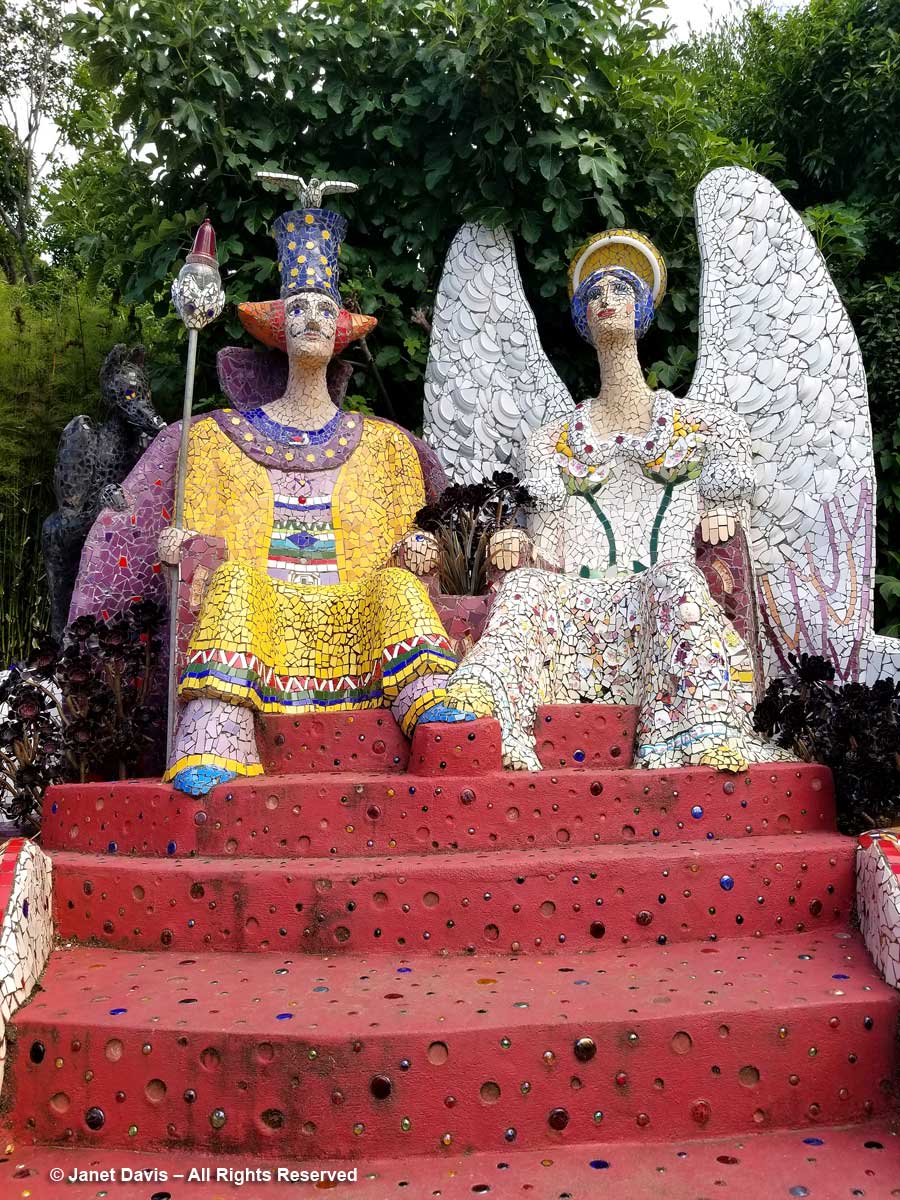
The Bonbon Palace is the faux entrance to a playhouse. Well, the entire garden is a playhouse, let’s face it! In fact,The Giant’s House got its name from the words of a child who looked at it looming up the hill and decided a giant must certainly live there.

I walked along this path and spotted those intriguing yellow arms above…….

…. and climbed up to discover a menagerie guarding a peacock throne — but one quite unlike the royal seat of a Mughal emperor.
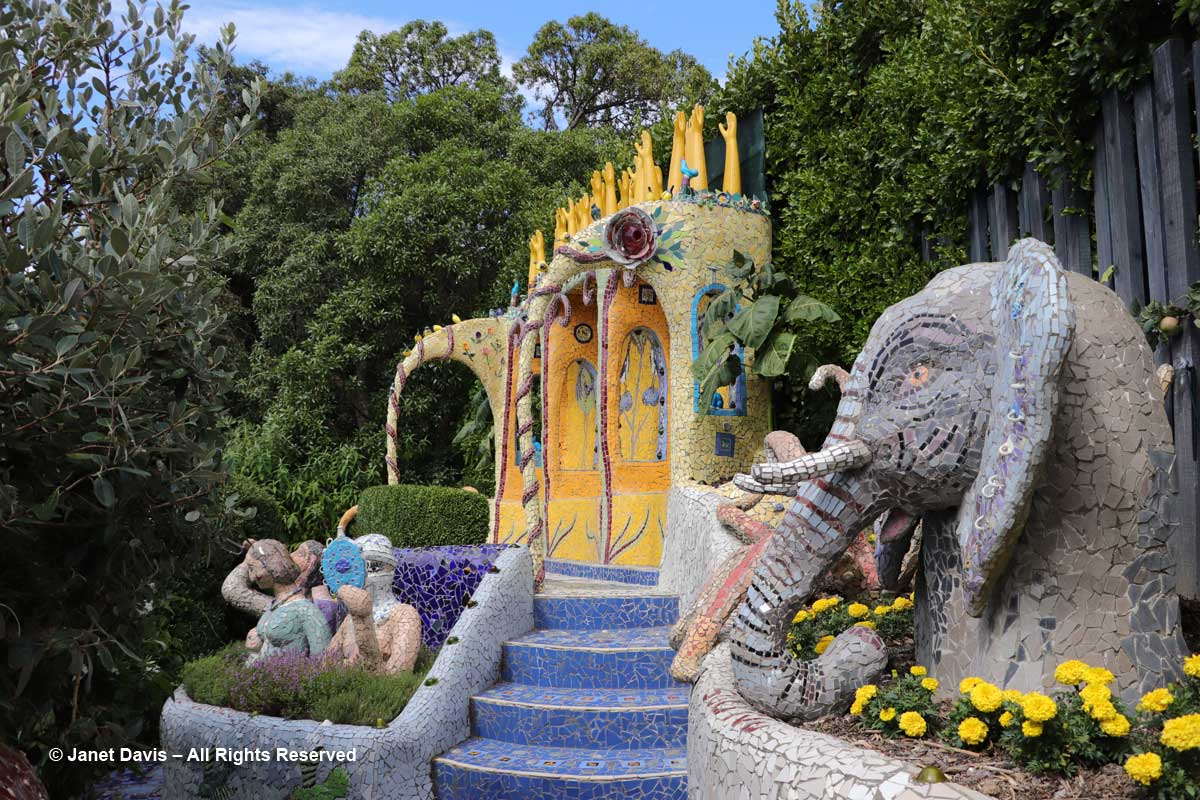
And yes, the yellow arms seemed very happy.
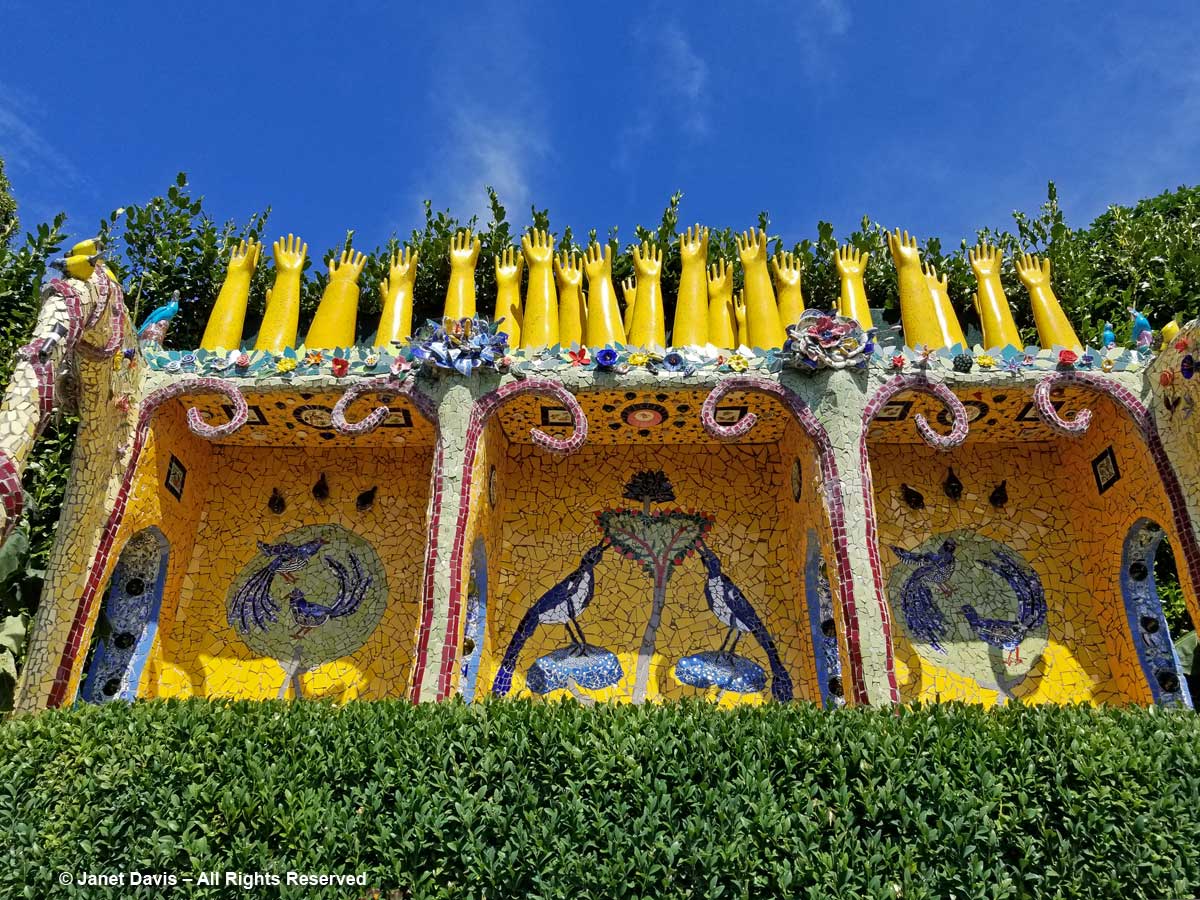
Look at the beautiful tile work on the floor here…..
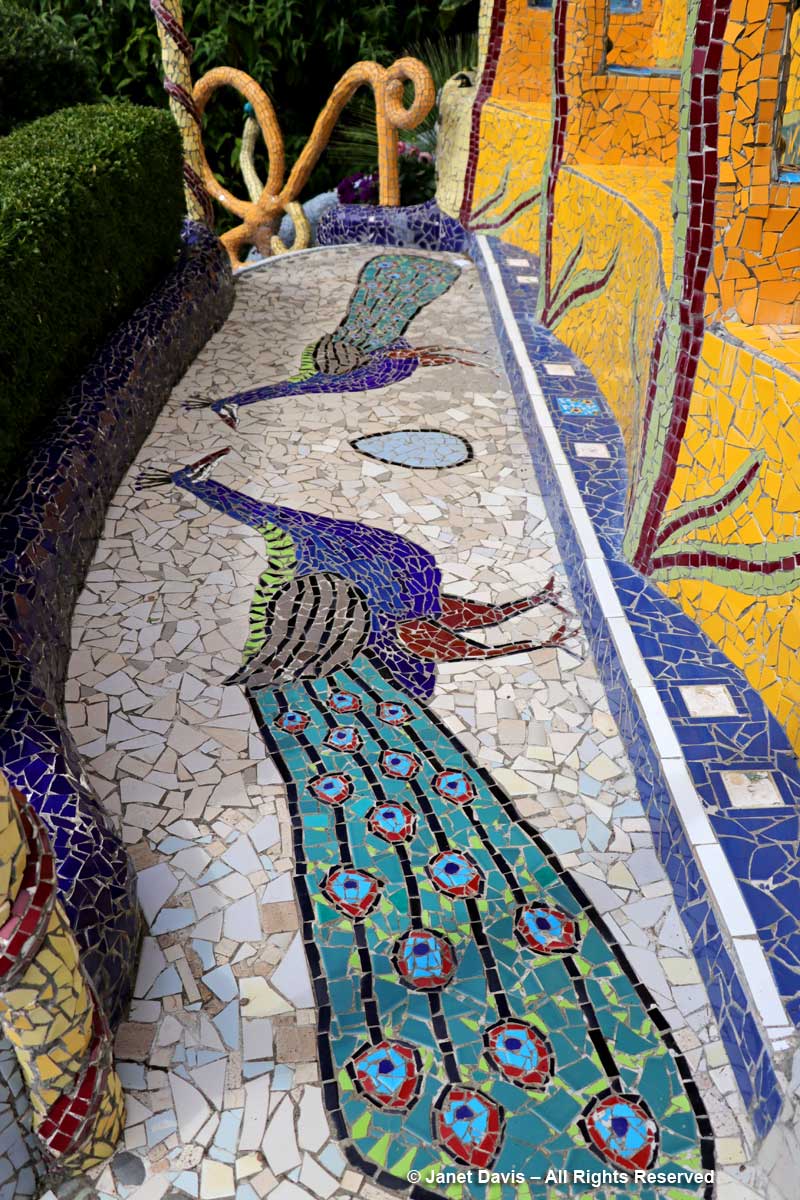
….. and on the walls.

I loved all Josie’s insects…….

….. and birds, including the iconic New Zealand kiwi, which…….
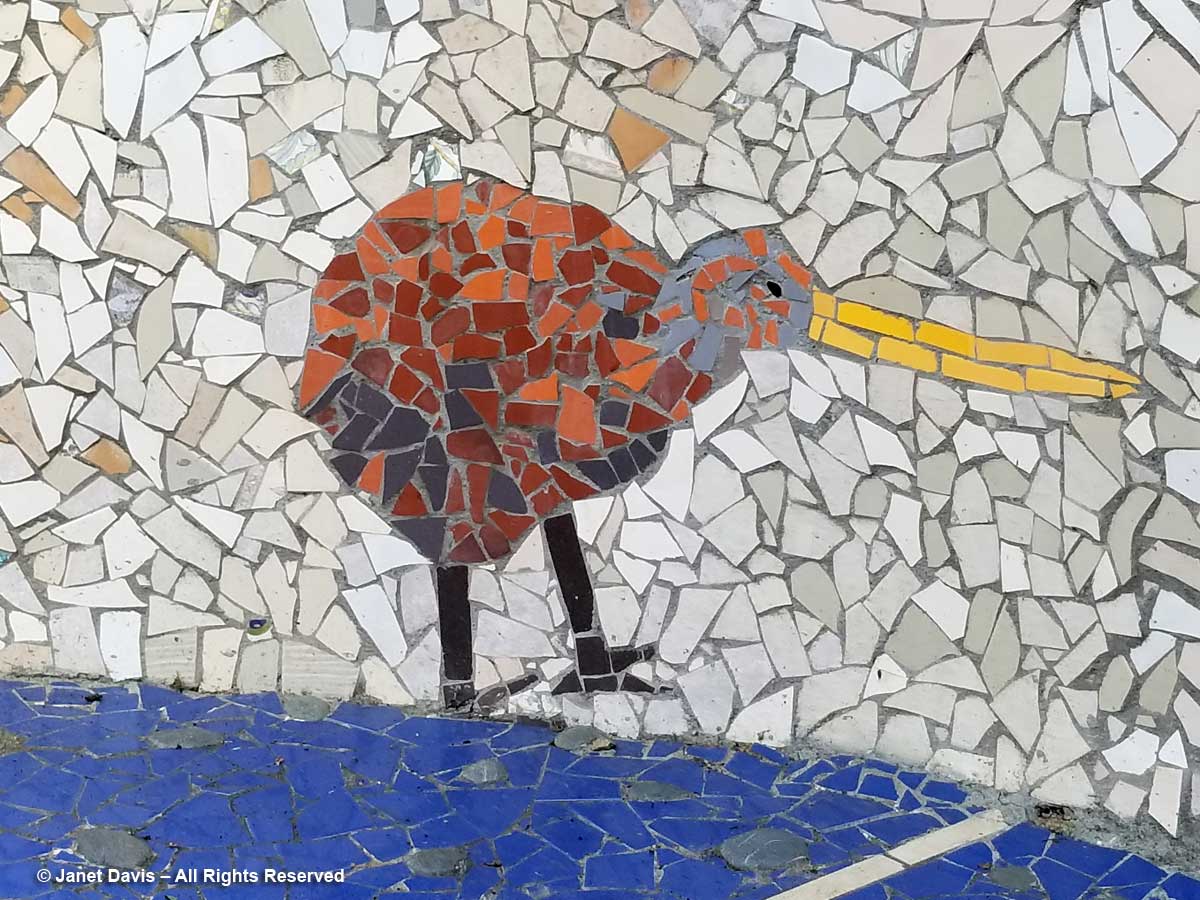
…..adorned the wall of the steps leading to…….
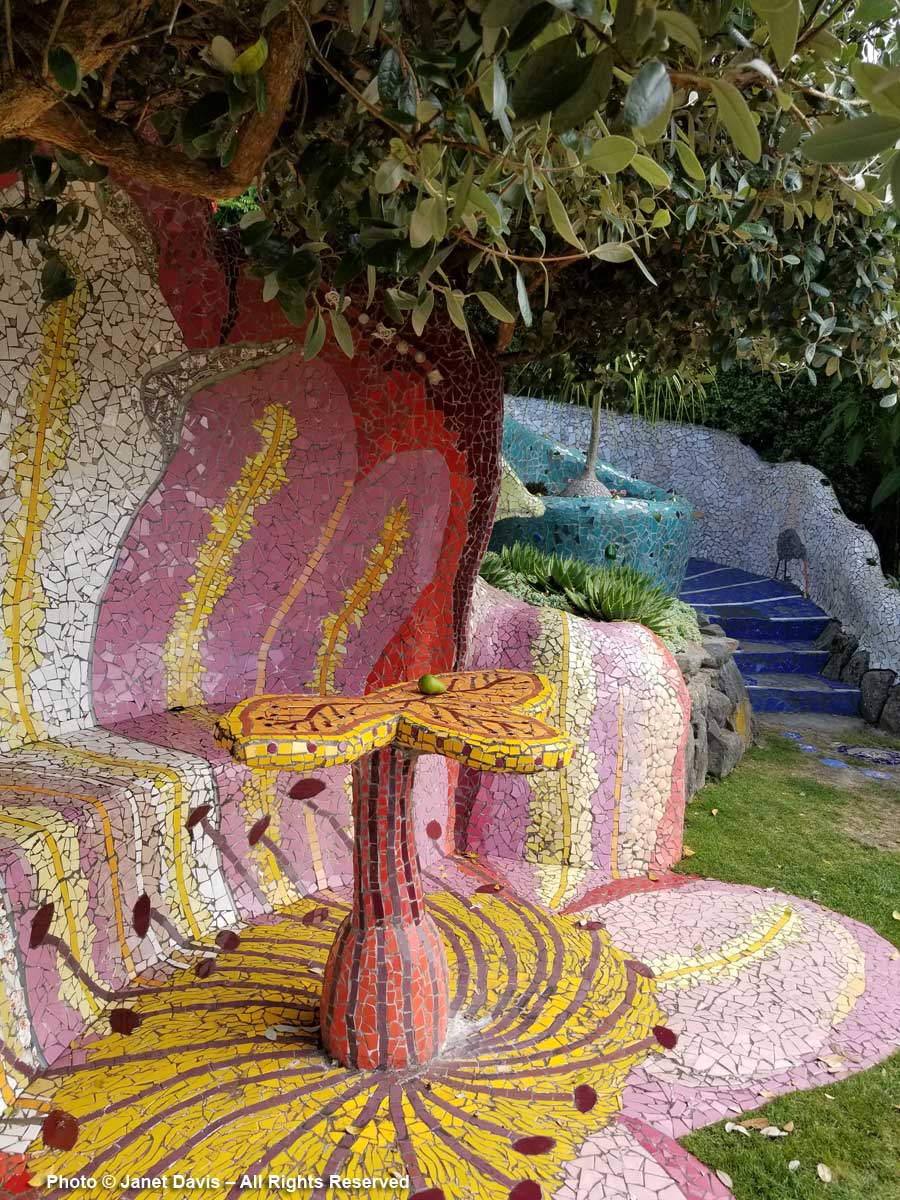
….. a magical flower grotto.

I think this was my favourite piece, and I looked at it from a mirrored arch in front. Spiral aloes, too!!

Nearby were roses and ripening pears. They reminded me that The Giants House is very much the domain of a skilled gardener.
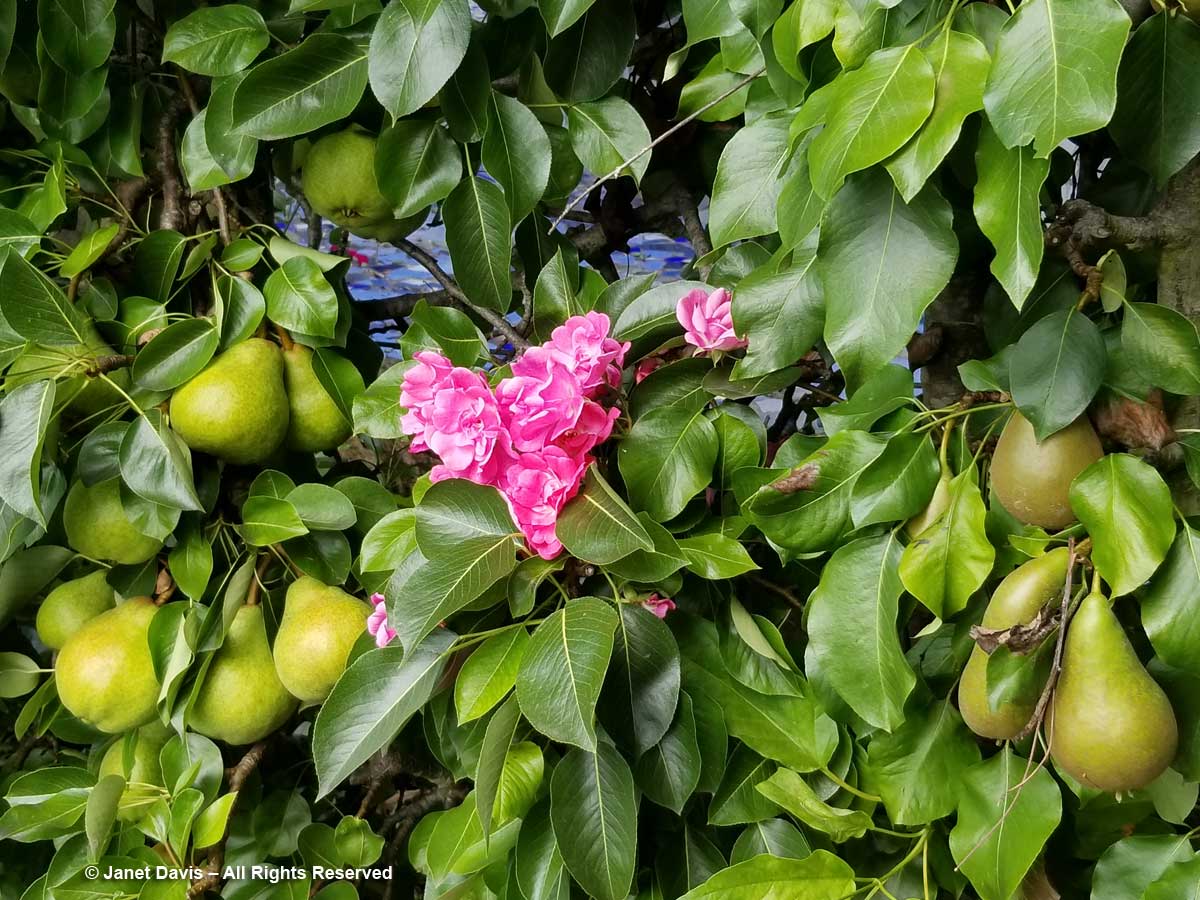
Though I could have spent hours more here, it was time to head down yet another set of mosaic steps…..
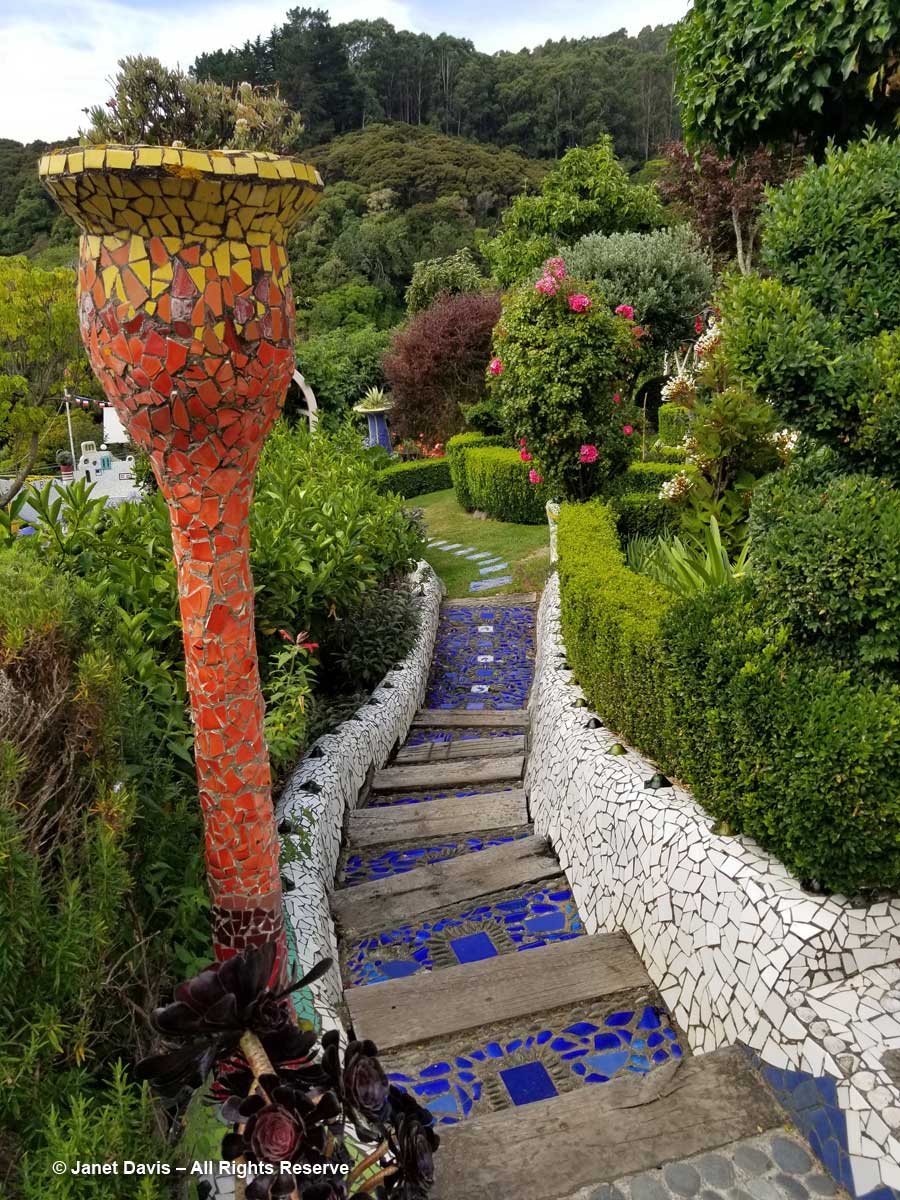
….. past a line of whimsical columns, towards the exit.
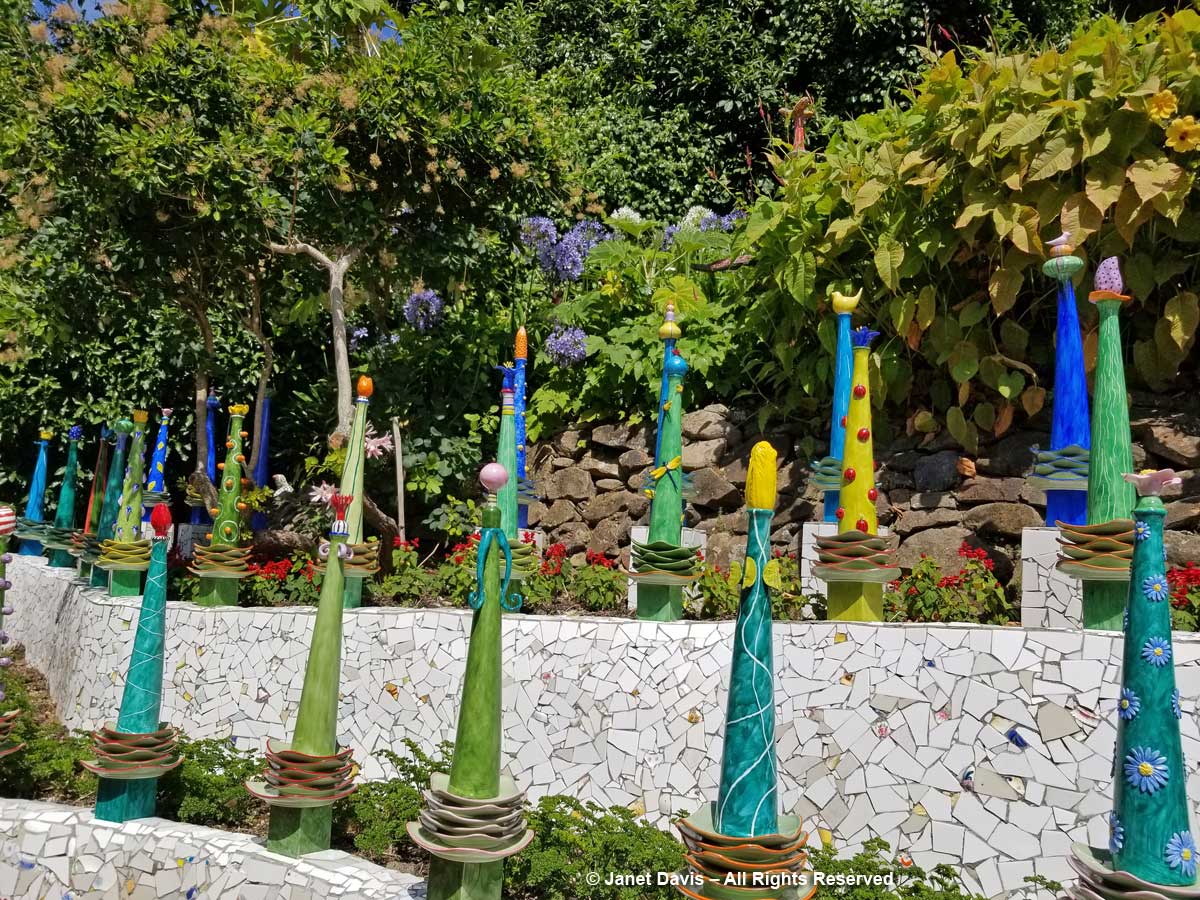
I’ve seen 1st century BC mosaic floors on the island of Delos in Greece and 12th century mosaica in the Basilica di San Marco in Venice and 15th century çini mosaics in Istanbul’s Topkapi. But Josie White’s floriferous, fantastical, surrealist mosaic hillside in Akaroa is the most fun I’ve had in a garden in years.

